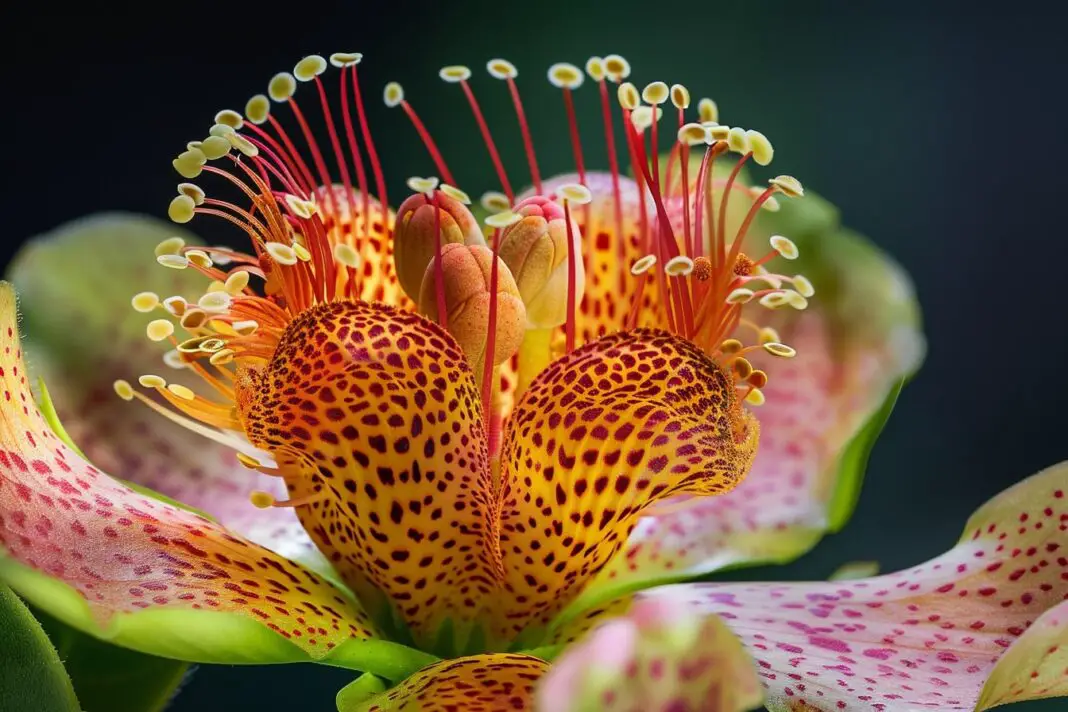If you’re looking to add some unique and unusual flowers to your garden, you’ve come to the right place. From the Corpse Flower to the Ice Cream Tulip, we’ve compiled a list of some of the world’s most fascinating and captivating flowers. Whether you’re a seasoned gardener or just enjoy admiring the beauty of nature, these flowers are sure to spark your curiosity and imagination.
Some of these flowers are extremely rare and difficult to find, while others are simply weird and wonderful. Regardless of their rarity or peculiar appearance, each flower on this list is truly a marvel of nature. So, sit back, relax, and prepare to be amazed by the incredible diversity of the world’s flora.
Corpse Flower (Amorphophallus titanum)

The corpse flower, also known as Amorphophallus titanum, is a rare and massive flowering plant native to the rainforests of Sumatra, India. It is one of the largest flowering plants in the world, and it is known for its foul odor that resembles rotting flesh. The corpse flower blooms only once every four to five years, producing a single flower. It is also known as the voodoo lily.
Naked Man Orchid (Orchis italica)
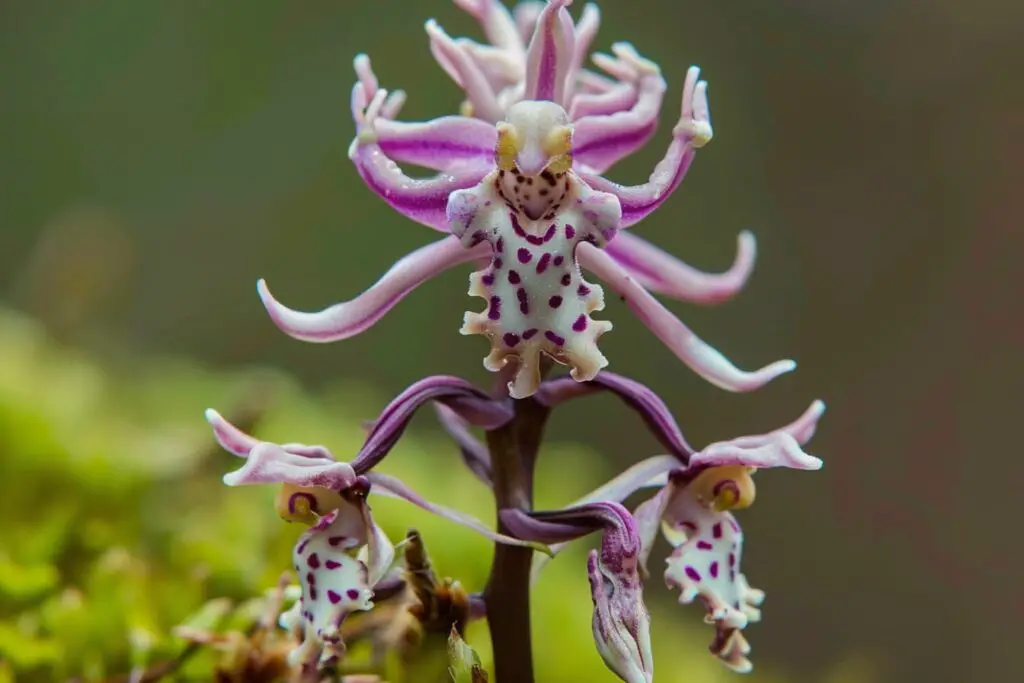
The Naked Man Orchid, native to the Mediterranean region, is a unique species of orchid that boasts small flowers shaped like naked men. These flowers are intricately detailed, making them a fascinating sight to behold.
Monkey Orchids (Dracula simia)

The Monkey Orchid, also known as Dracula simia, is a rare orchid species found in the cloud forests of Ecuador and Peru. Its flowers bear a striking resemblance to a monkey’s face, hence its name. The scientific name, Dracula simia, refers to the “little dragon-monkey” appearance of the flowers.
Hooker’s Lips (Psychotria elata)

You may have heard of the plant known as Hooker’s Lips or Psychotria elata, found in the rainforests of Central and South America. This plant has become internet-famous due to its unique appearance, with bright red, lip-shaped bracts surrounding the tiny flowers. Sadly, deforestation is threatening this species.
Parrot’s Beak (Lotus berthelotii)
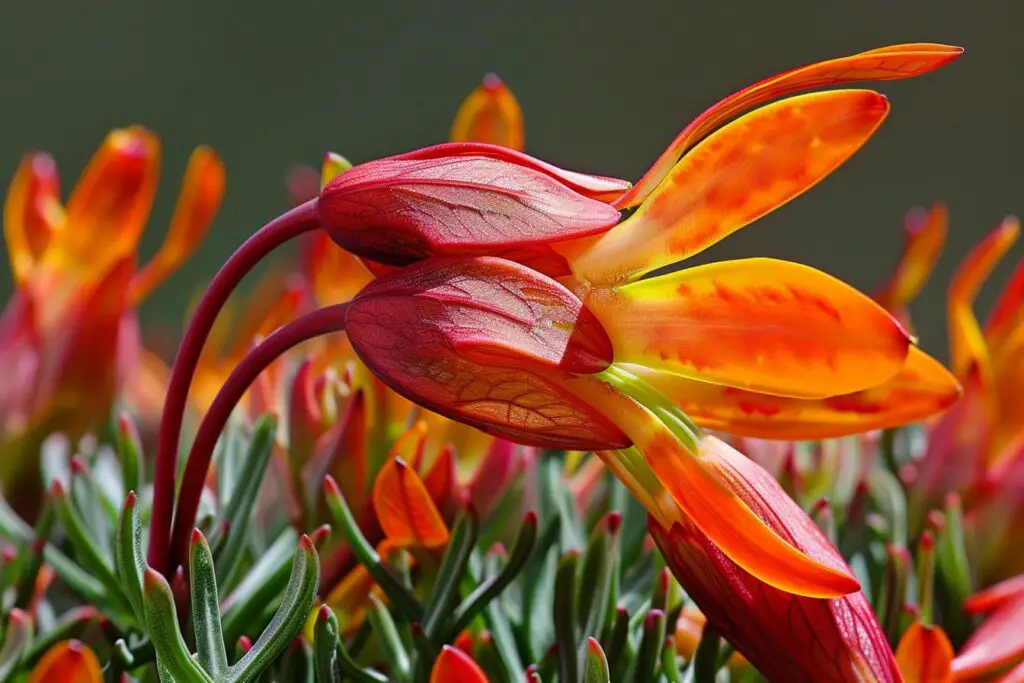
If you’re looking for a rare yet stunning flower to add to your ornamental garden, the Parrot’s Beak is an excellent choice. This flower gets its name from its unique curved, beak-like shape, and its vibrant orange-red color and feathery foliage make it a popular choice for gardeners. Native to the Canary Islands, this flower is a must-have for any garden enthusiast.
Bat Plant (Tacca chantrieri)
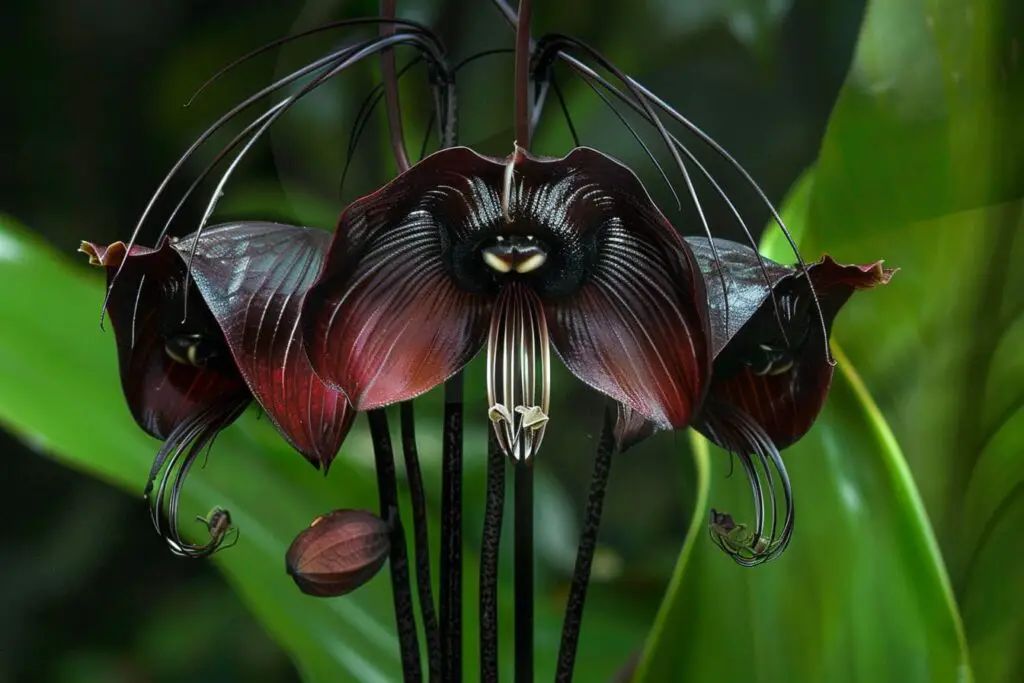
The Bat Plant, also known as Tacca chantrieri, is a tropical plant native to Southeast Asia. It thrives in warm, humid conditions and is characterized by its large, bat-like flowers and long, whisker-like filaments.
Bee Orchid (Ophyrys apifera)
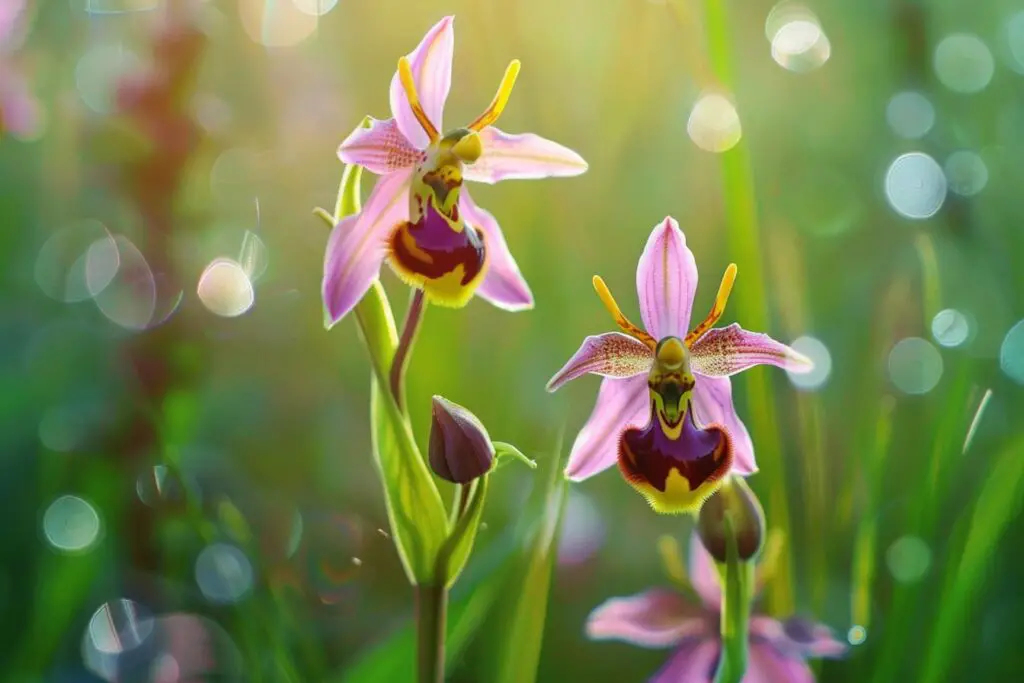
The Bee Orchid is a European terrestrial orchid known for its unique appearance that resembles a female bee. Male bees are attracted to the flower, which ensures pollination. This orchid is a favorite among flower enthusiasts.
Swaddled Babies (Anguloa uniflora)
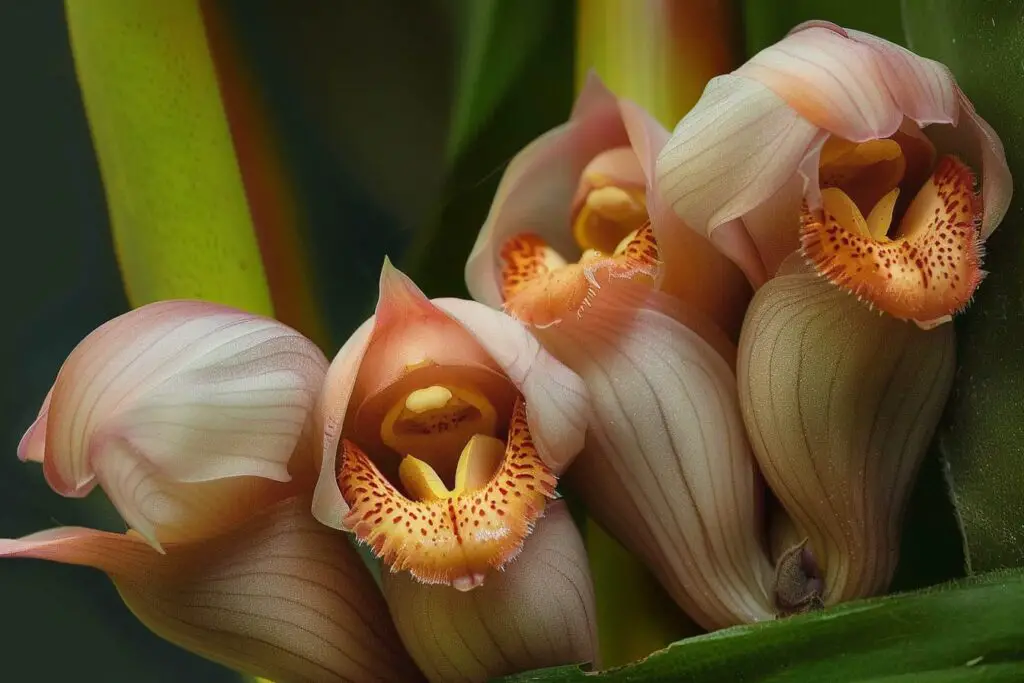
The Swaddled Babies orchid is a large, fragrant flower that resembles tiny babies wrapped in swaddling clothes. This orchid is native to the Andean region of South America and is known for its unique appearance. The plant grows up to a height of 18-24 inches and requires misting up to five times a day in summer conditions. Water the plant every five to seven days in summer and slightly less in winter. The proper temperatures are 50 degrees F. on winter nights and 65 degrees F. in summer evenings.
Flying Duck Orchid (Caleana major)
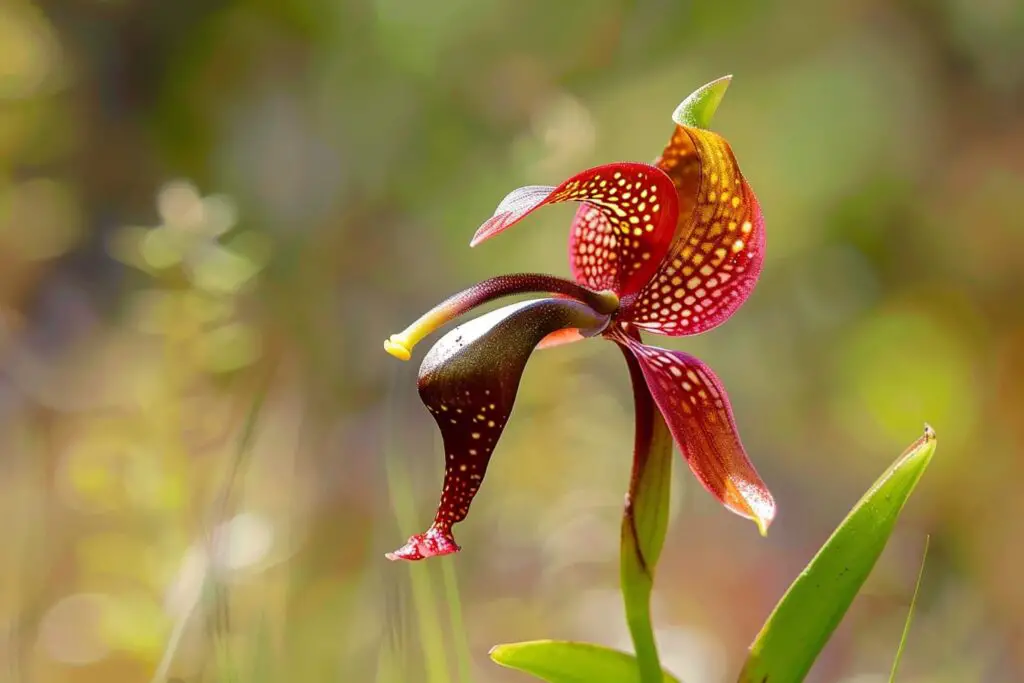
The Flying Duck Orchid is a rare and unique plant native to the Australian wilderness. Its flowers are small, measuring only ½ to ¾ inches (1-2 cm) in length, and look like tiny flying ducks. The petals and sepals of the flower form the shape of a duck in flight, complete with a head, wings, and a tail. The vibrant colors of the flower range from deep reds to bright yellows, with intricate patterns and markings.
The Caleana major is a sought-after species among collectors due to its unique shape and vibrant colors. It is a terrestrial plant that blooms in late spring and early summer, from September until January. The plant’s scientific name is Caleana major, and it is also commonly known as the Flying Duck Orchid.
This orchid is an attractant to insects, such as male sawflies, which pollinate the flower in a process known as pseudocopulation. The labellum of the flower is in the shape of the beak of the duck, and its length and breadth are such that it serves as a perfect place for sitting for the male sawfly.
In 1986, the Flying Duck Orchid was featured on an Australian postage stamp.
White Egret Flower (Pecteilis radiata)
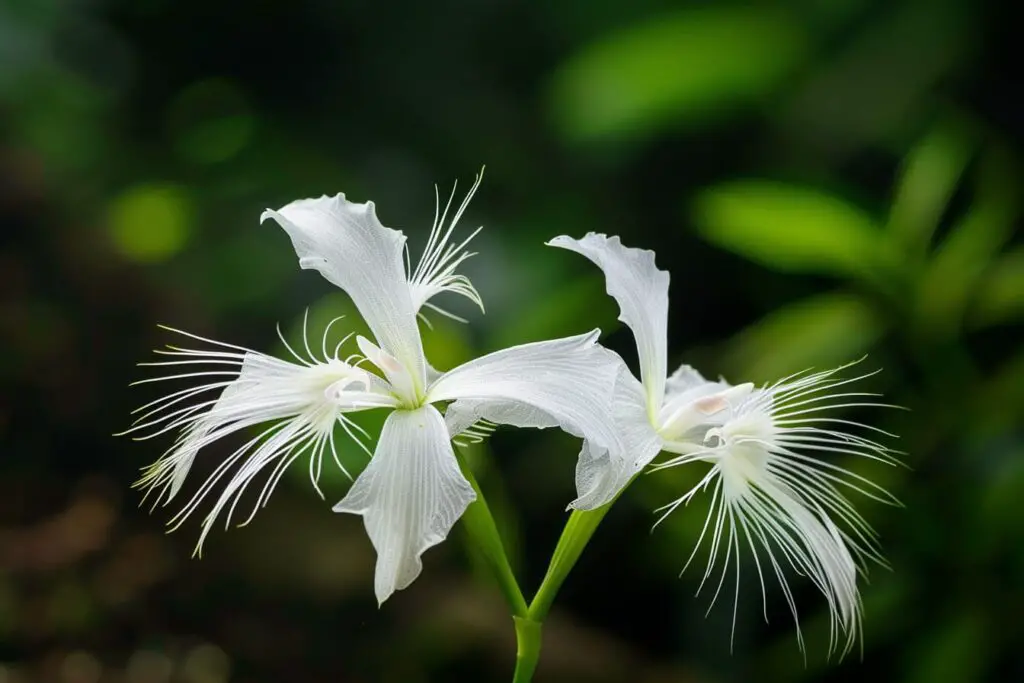
The White Egret Flower (Pecteilis radiata), also known as the fringed orchid or sagisō, is a delicate beauty native to Japan, China, and Korea. Its pristine, white petals gracefully unfurl to reveal a striking resemblance to a graceful egret in flight, complete with feathery, fringed edges. This captivating orchid thrives in damp habitats like wetlands and marshes.
Parachute Plant (Ceropegia sandersonii)
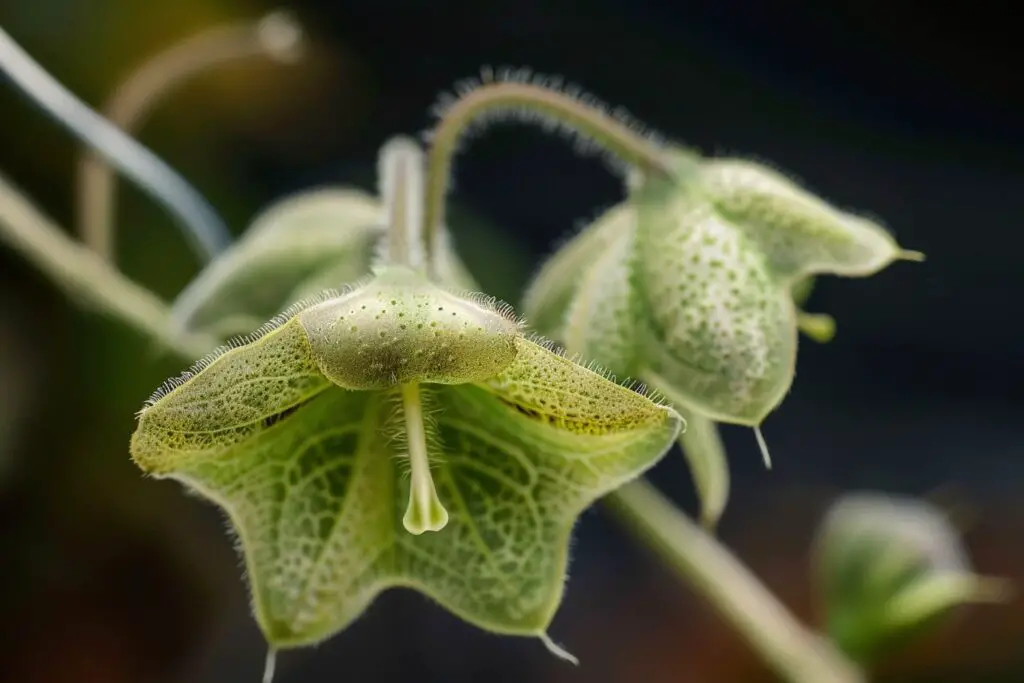
The Parachute Plant, also known as Ceropegia sandersonii, is a fascinating flowering plant native to South Africa, Eswatini, and Mozambique. It is known for its unique parachute-shaped flowers that give it an almost otherworldly allure. This plant prefers indirect bright light and should be sheltered from direct sunlight. It is best suited for USDA hardiness zones 10b to 11b and prefers a slightly cooler climate. To propagate, choose a healthy-looking stem on the mother plant that has several leaves. Make a cut about six inches from the stem tip, just below a leaf node. Remove the leaves from the lower half of the stem and leave the cutting out to callus over for a few days. Then, fill a small plant pot with well-drained potting mix and water it well to moisten it. This plant will grow healthy and happy with proper care.
Passion Flower (Passiflora incarnata)
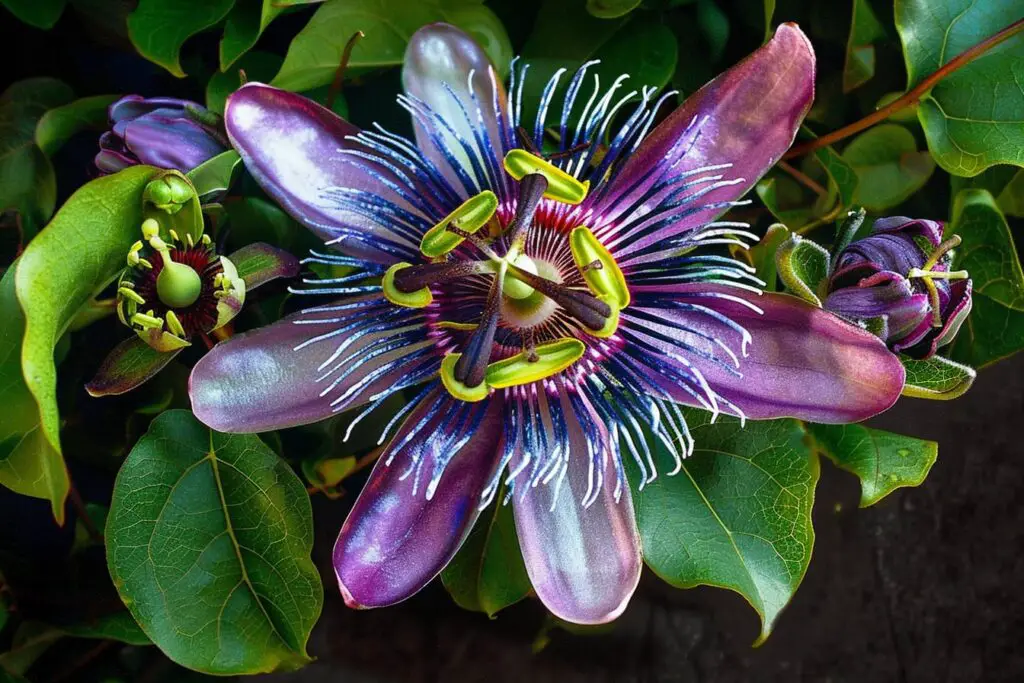
Passion Flower is a native plant to the southeastern United States. Its unique structure is characterized by a central, corona-like ring of filaments surrounded by delicate, finely-pointed petals and sepals. The intricate, radial pattern of the Passion Flower is truly a sight to behold.
Jackal Food (Hydnora africana)
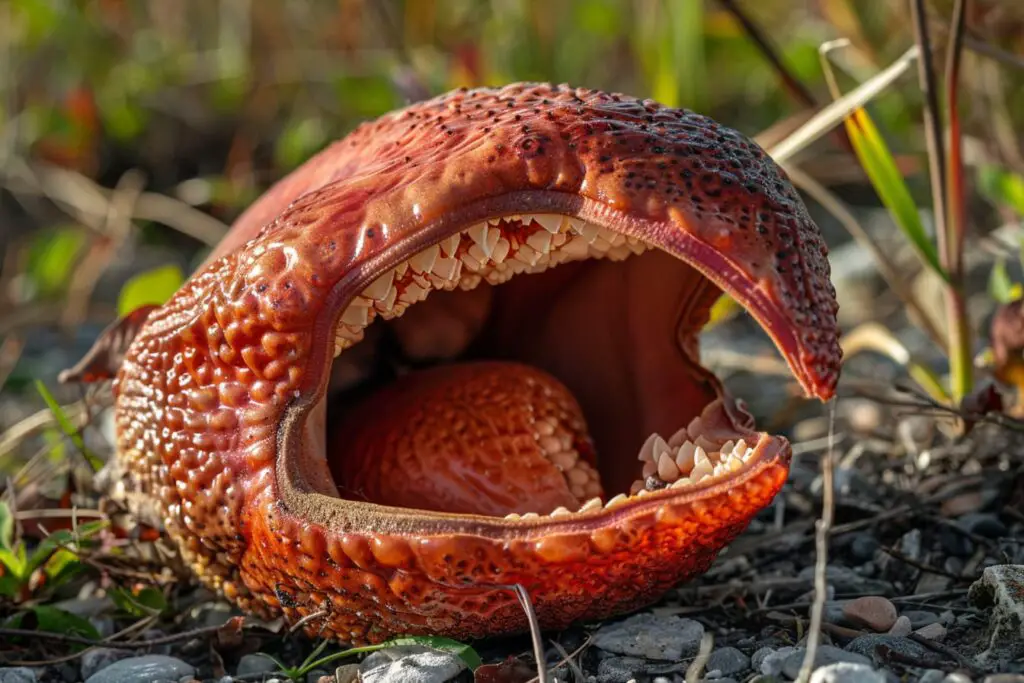
You may be surprised to learn about the existence of Hydnora africana, an unusual and parasitic plant native to southern Africa. This fascinating plant grows almost entirely underground, with only its flowers emerging above ground.
The flowers of Hydnora africana are truly unique in appearance, resembling flesh and emitting a strong odor to attract pollinators such as dung beetles and carrion flies. The flowers are bisexual and develop underground, with three thick lobes that are fused together. The inner surface of the flower is a vibrant salmon to orange color, while the exterior of the lobes is covered by many bristles.
Interestingly, Hydnora africana has been used as a traditional medicine by indigenous people in southern Africa to treat a variety of ailments such as epilepsy, stomach problems, and even infertility. However, further research is needed to determine the efficacy and safety of using this plant for medicinal purposes.
Overall, Jackal Food (Hydnora africana) is a fascinating and unique plant that has captured the attention of botanists and nature enthusiasts alike.
Jewel Orchid (Ludisia discolor)
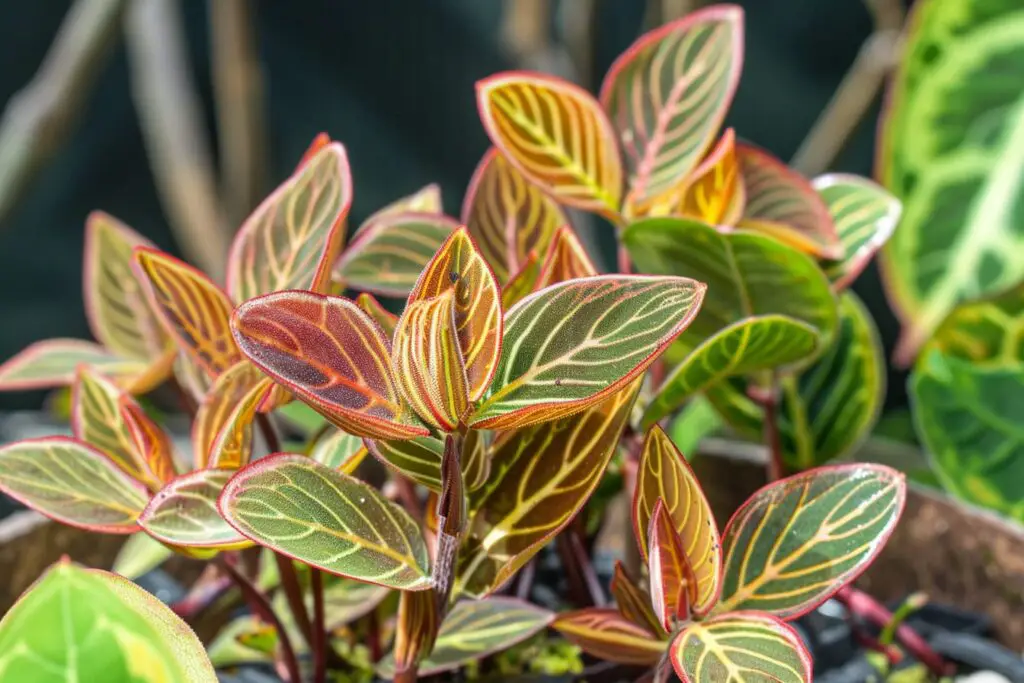
The Ludisia discolor, commonly known as the Jewel Orchid, is a terrestrial orchid native to Southeast Asia. This orchid is highly prized for its stunning, dark green foliage with intricate patterns. Although it produces small, white flowers on long spikes, the leaves are the main attraction. To care for your Jewel Orchid, keep the temperature between 50-75°F and mist the plant to maintain moderate humidity.
Heart Flower (Lamprocapnos spectabilis)
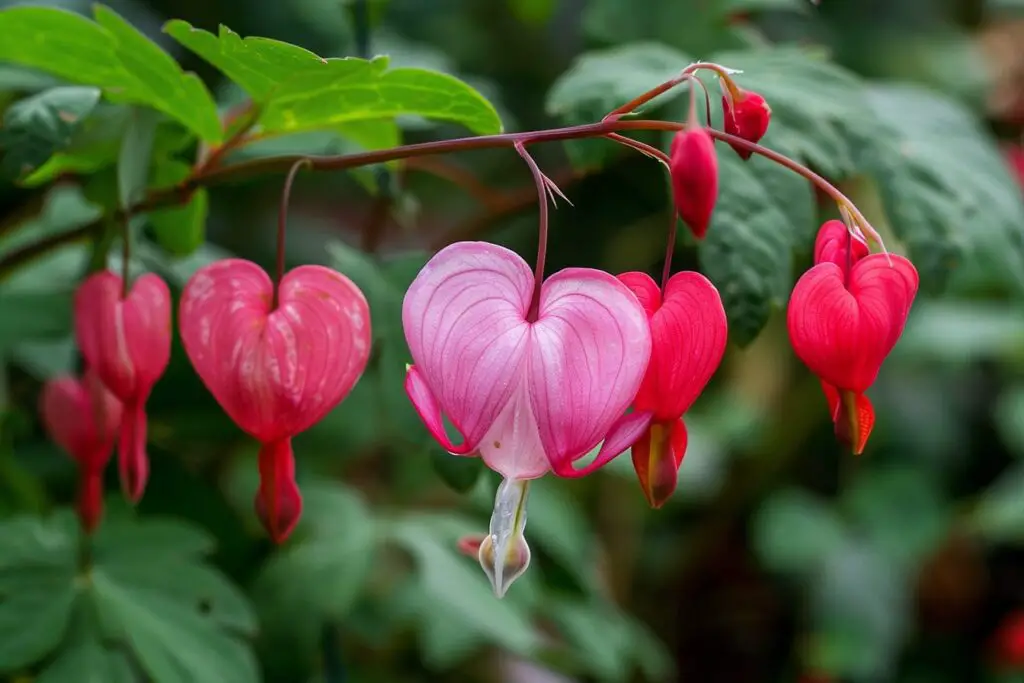
You can add a touch of romance to your garden with the heart-shaped flowers of the Lamprocapnos spectabilis, also known as the bleeding heart. This perennial plant is native to Asia and is a popular choice for woodland gardens due to its delicate beauty. Its unique flowers seem to “bleed” small, white petals, making it a stunning addition to any garden.
Sea Poison Tree (Barringtonia asiatica)
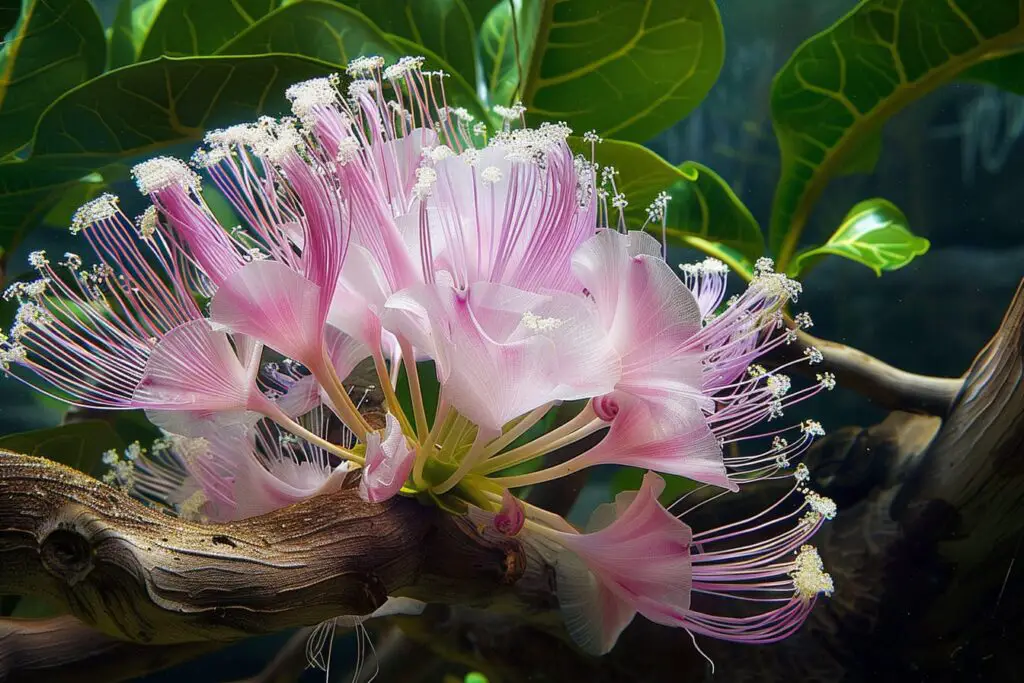
You can find the Sea Poison Tree in coastal regions of the Indian Ocean and the western Pacific. Its flowers, which bloom at night, resemble white pom-poms with long, red stamens. Bats and moths pollinate the fragrant flowers.
Chocolate Cosmos (Cosmos atrosanguineus)

You will love the deep maroon, almost black flowers of this Mexican perennial. The flowers emit a rich, chocolatey scent, making chocolate cosmos a popular choice for cut flower arrangements.
Flame Lily (Gloriosa superb)
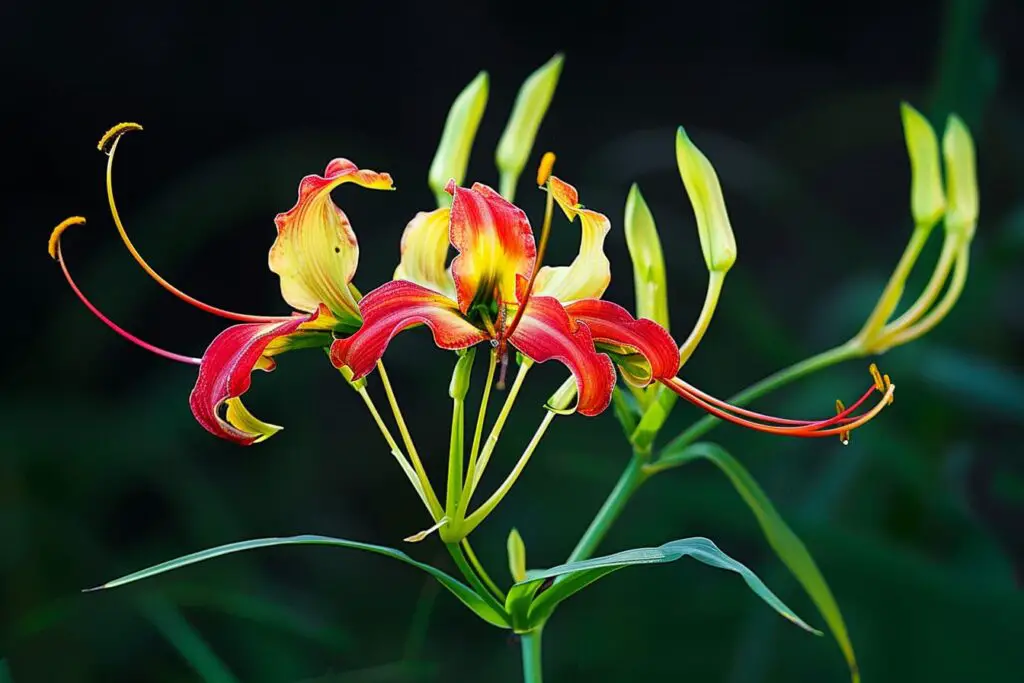
The Flame Lily, also known as Gloriosa superb, is a climbing plant native to tropical regions of Asia and Africa. It gets its name from its fiery, red and yellow petals that resemble flames. This exotic flower is admired for its striking beauty, but it’s important to note that the plant is highly toxic.
Darth Vader (Aristolochia salvadorensis)
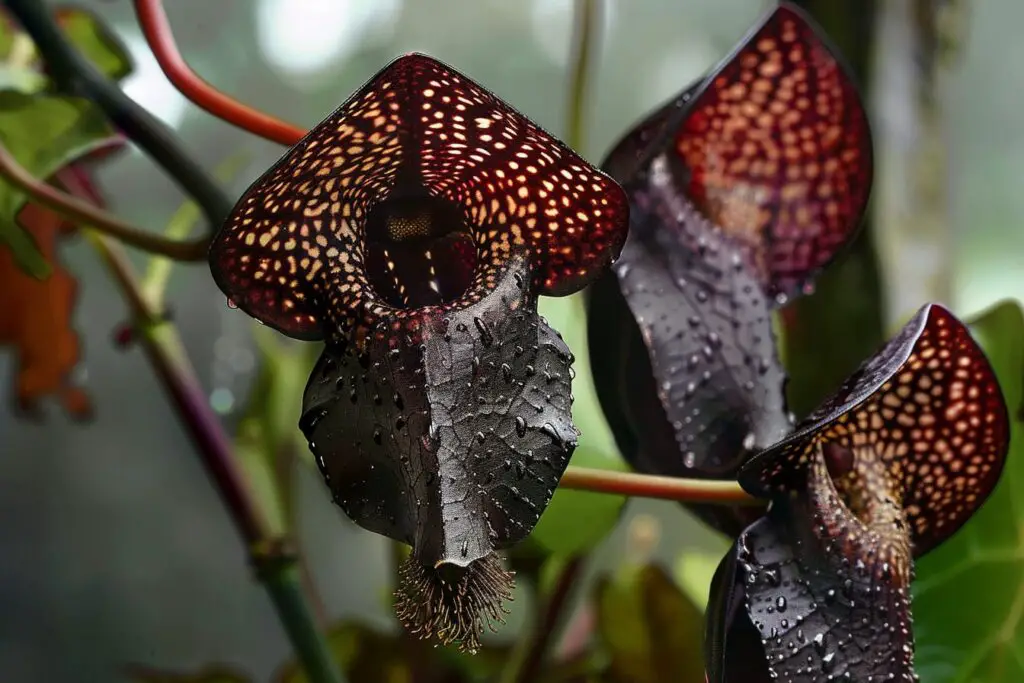
You may be interested in the Darth Vader plant, also known as Aristolochia salvadorensis. This plant is a member of the pipevine family and is native to Central America. It is known for its unique, jug-shaped flowers that have intricate maroon and white patterns. The flowers are quite exotic and add an element of mystery to any garden or plant collection. The Darth Vader plant is a great addition to highlight the diversity and wonder of the plant kingdom.
Snapdragon Seed Pods (Antirrhinum majus)
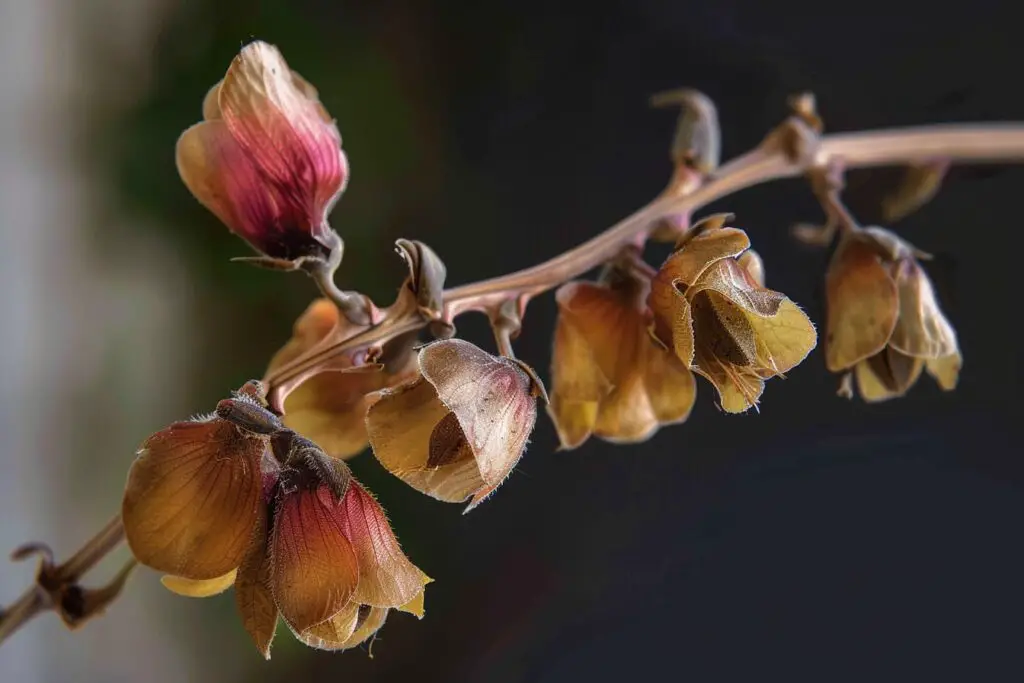
After the snapdragon’s colorful flowers fade, the remaining seed pods take on a unique, skull-like appearance. This popular garden plant is native to the Mediterranean region.
Ghost Plant (Monotropa uniflora)
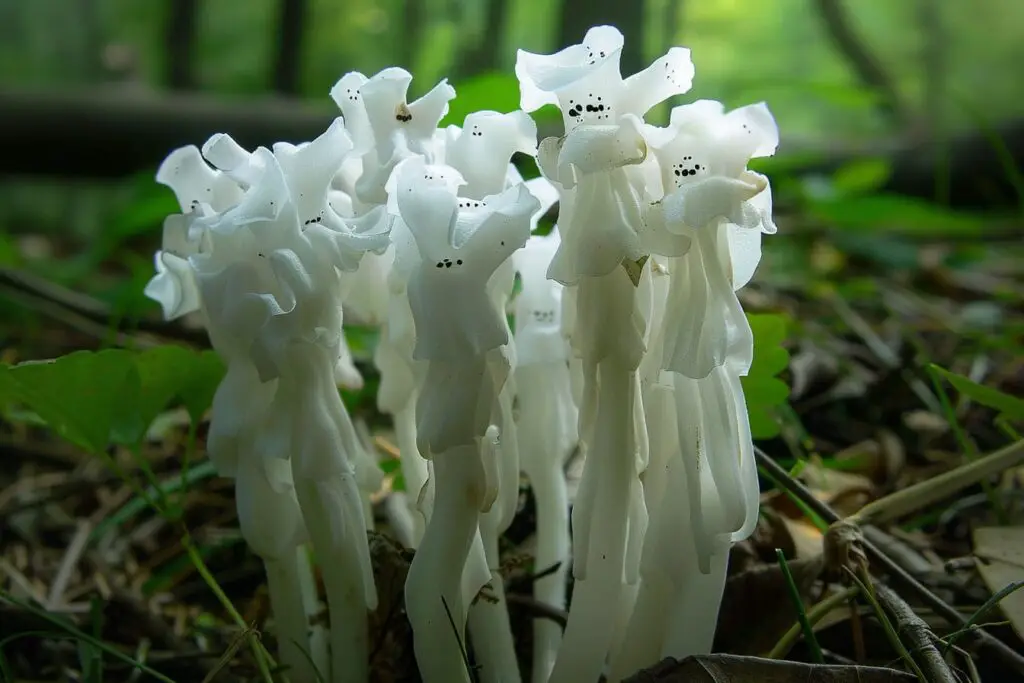
The Ghost Plant, also known as Monotropa uniflora, is a unique parasitic plant found in the shaded forests of North America. This plant lacks chlorophyll, which is necessary for photosynthesis, and is entirely white in color. It obtains its nutrients from fungi in the soil through a mycorrhizal relationship.
Devil’s Hand (Chiranthodendron pentadactylon)
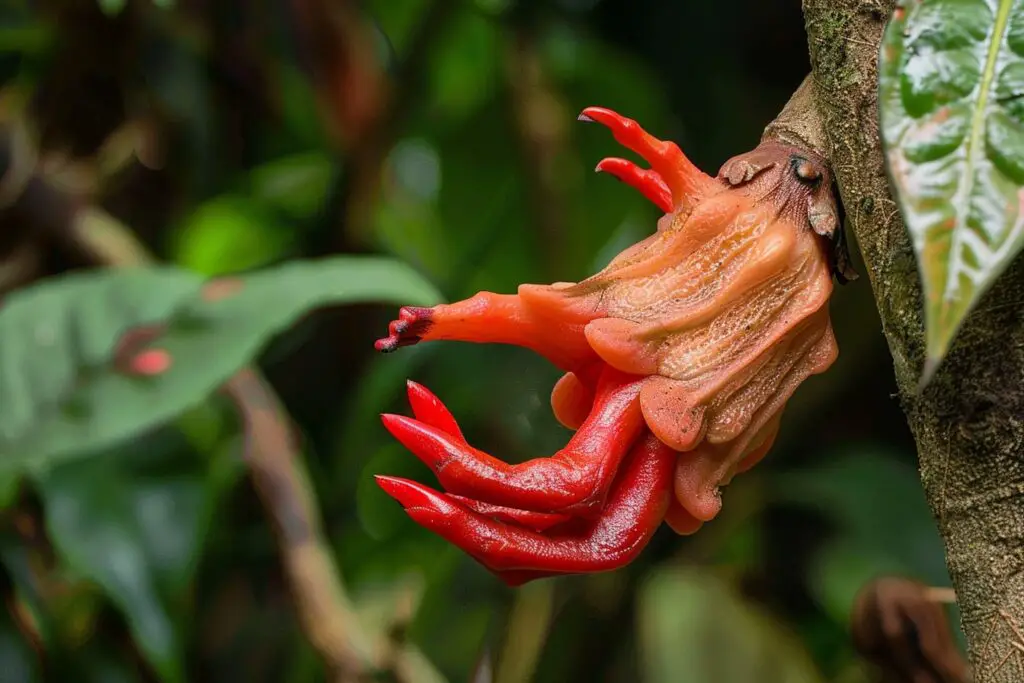
The Devil’s Hand is a unique tree that is native to Mexico and Guatemala. It is known for its extraordinary flowers that look like a devil’s hand with long, finger-like structures. The vibrant red blooms create a striking visual effect that showcases the boundless creativity found in nature. This tree can grow up to 40 feet and has large leaves with prominent veins and fuzz. The flowers are popular with certain birds who drink nectar from the cup-like structure. It is a broadleaf evergreen tree that grows well with sun and low water and does well in well-drained and average soil.
The Devil’s Hand tree is a rare and beautiful addition to any garden or landscape. Its unique appearance and low maintenance make it an attractive choice for those looking to add some visual interest to their outdoor space.
Welwitschia (Welwitschia mirabilis)
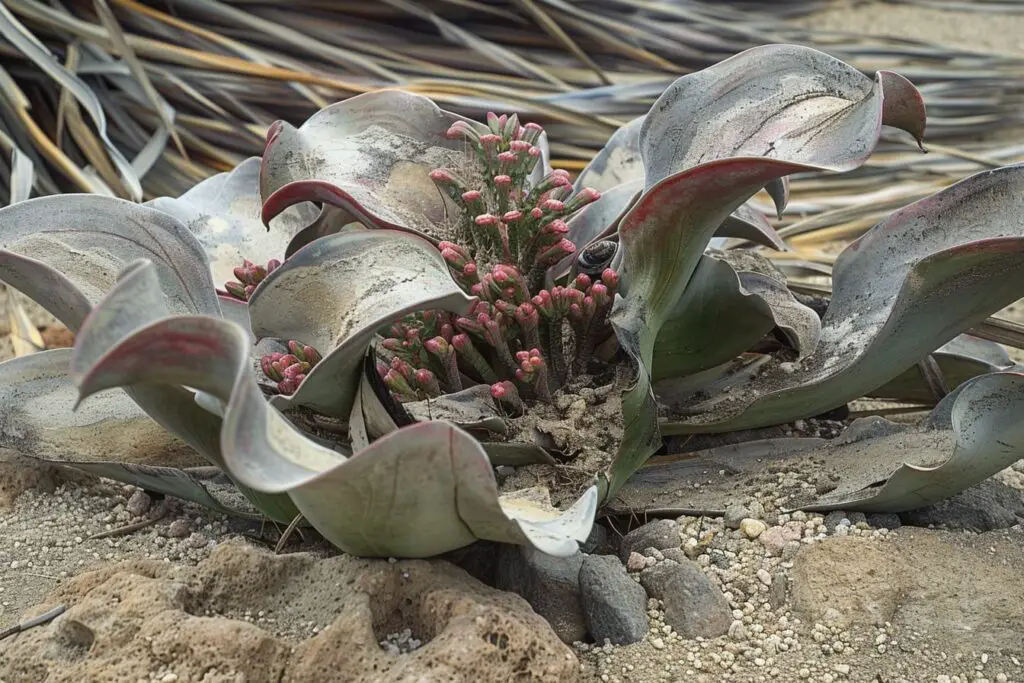
You will find the Welwitschia plant in the hot, dry deserts of Namibia and Angola. This ancient plant is unique in that it produces only two leaves during its lifetime, which can span over a thousand years. The leaves are broad, ribbon-like, and leathery, lying on the ground and becoming tattered and twisted over time, giving the plant a unique appearance.
Rainbow Trees, Eucalyptus deglupta
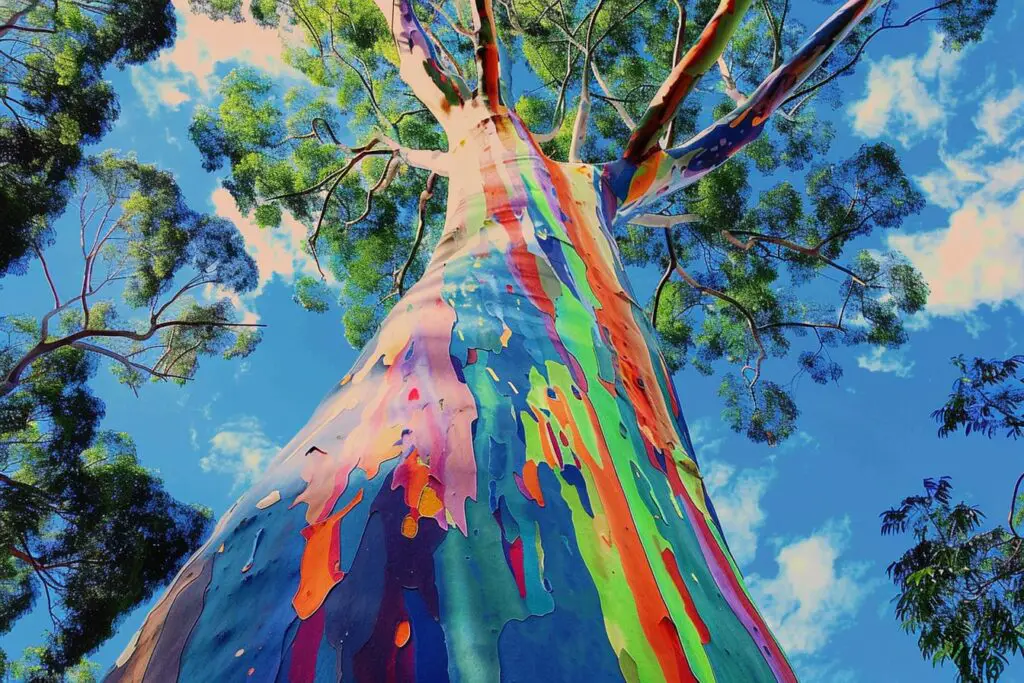
Rainbow Trees, also known as Eucalyptus deglupta or Mindanao gum, are tropical trees that are native to the Philippines, Indonesia, and Papua New Guinea. These trees are famous for their multicolored bark, which peels away in strips to reveal hues of blue, purple, orange, and maroon. Rainbow Trees are highly sought after for their unique, kaleidoscopic appearance, making them a popular choice for gardens and landscapes in tropical and subtropical regions. These trees grow quickly and can reach a height of up to 75 meters. They produce white-yellow flowers in panicles along the branches and have oval-shaped, persistent leaves. Rainbow Trees do not produce essential oil, unlike other eucalyptus species.
Cobra Lily (Darlingtonia californica)

The Cobra Lily is a carnivorous plant native to North America. Its unique pitcher-like structures resemble a cobra with its hood flared. Insects are lured into the pitchers where they become trapped and eventually digested.
Starfish Flower (Stapelia grandiflora)
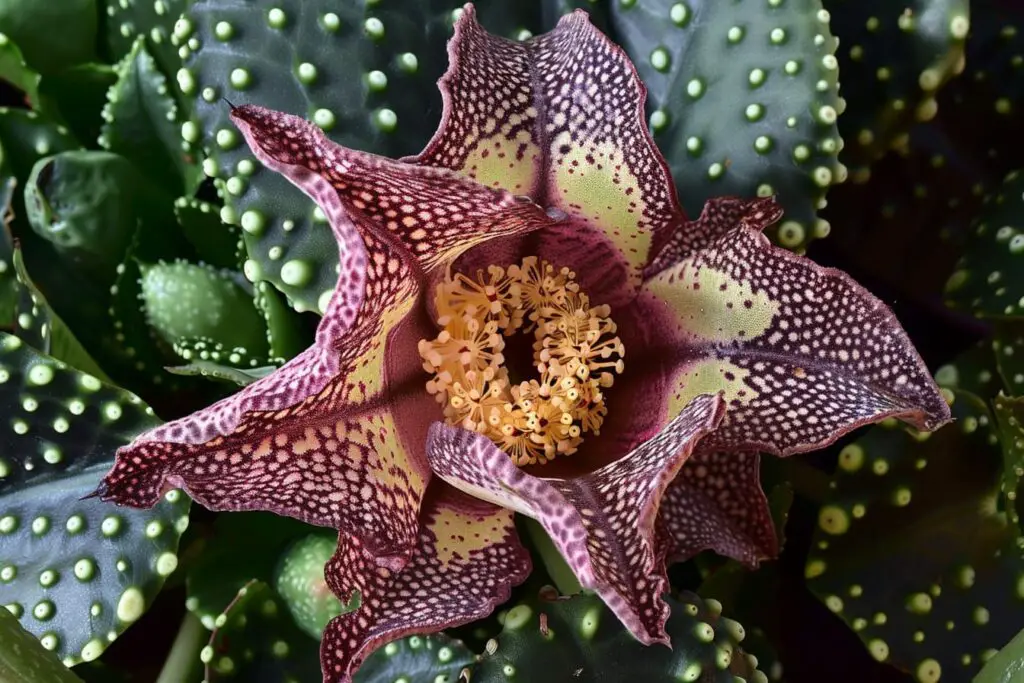
You can grow this South African succulent with ease. The plant produces large, star-shaped flowers that have a distinct, rotting odor. The smell attracts flies, which help pollinate the plant. Despite the odor, many people find the novelty of this plant to be worth growing.
Desert Rose (Adenium obesum)
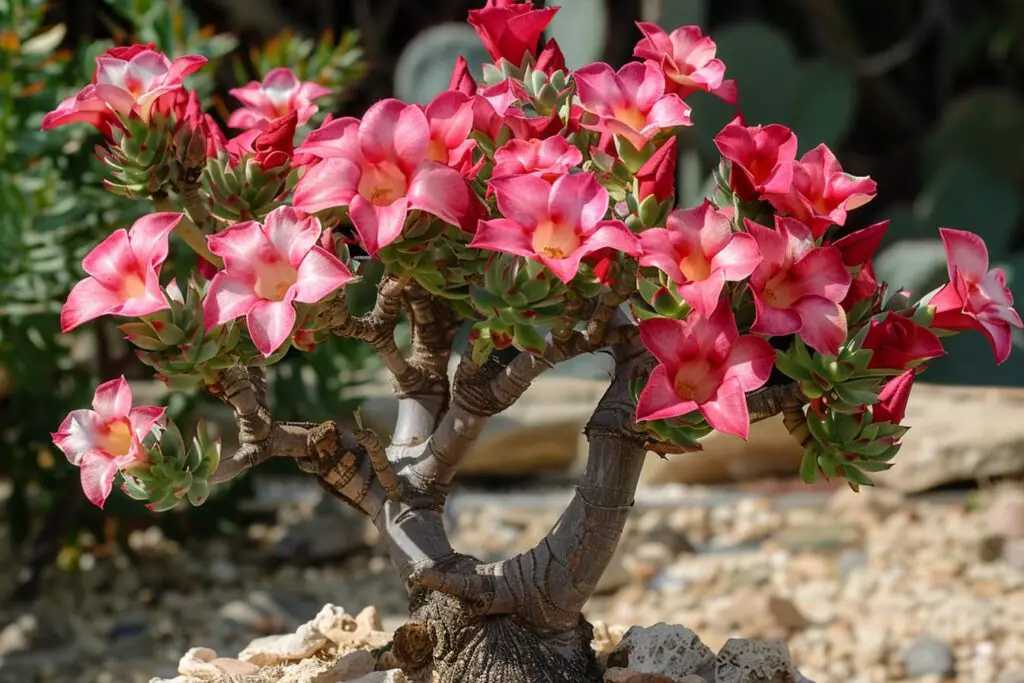
You can recognize the Desert Rose by its thick, twisted stems and vibrant pink or red flowers. This succulent is native to East Africa and the Arabian Peninsula, and it thrives in arid environments. Its ability to store water in its swollen trunk allows it to survive in harsh conditions.
Chinese Lantern (Physalis alkekengi)
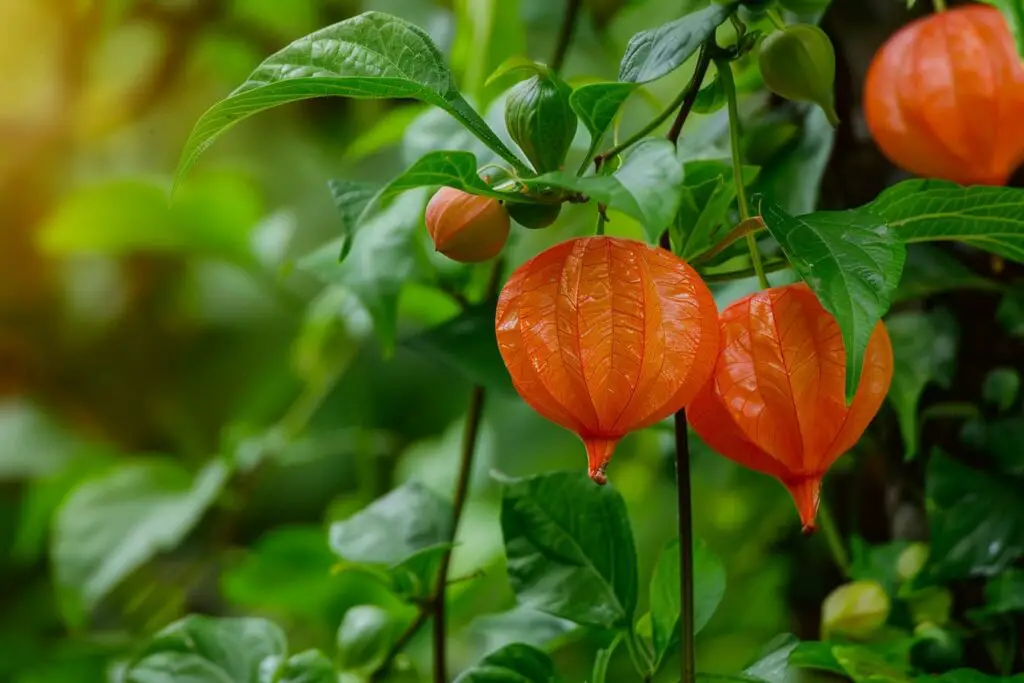
The Chinese Lantern, a perennial plant native to Eurasia, is known for its distinctive, bright orange, lantern-shaped seed pods that enclose small, red berries. Its unique appearance makes it a popular choice for ornamental gardens and dried flower arrangements. Consider planting this easy-to-care-for plant in well-draining soil and providing it with 6 to 8 hours of sun each day. Be sure to allow the soil to dry between watering, and proactively manage pests and diseases.
Sensitive Plant (Mimosa pudica)
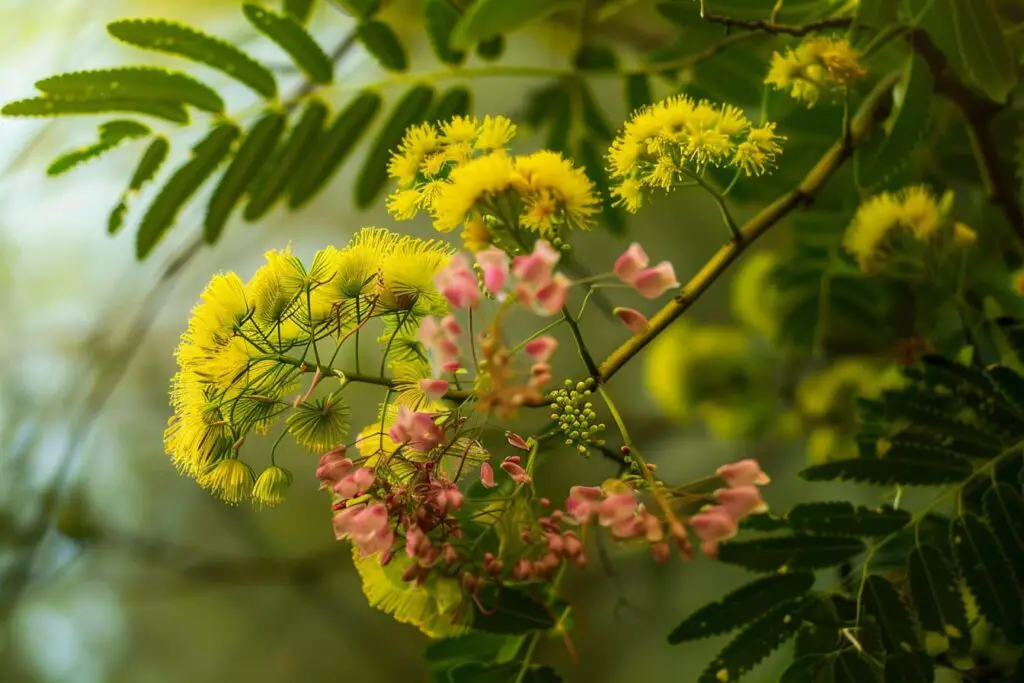
The Sensitive Plant, also known as Mimosa pudica, is a fascinating plant native to Central and South America. Its leaves fold rapidly when touched, making it a favorite among children and plant enthusiasts alike. This unique response is due to the plant’s sensitivity to stimuli.
Dead Horse Arum (Helicodiceros muscivorus)
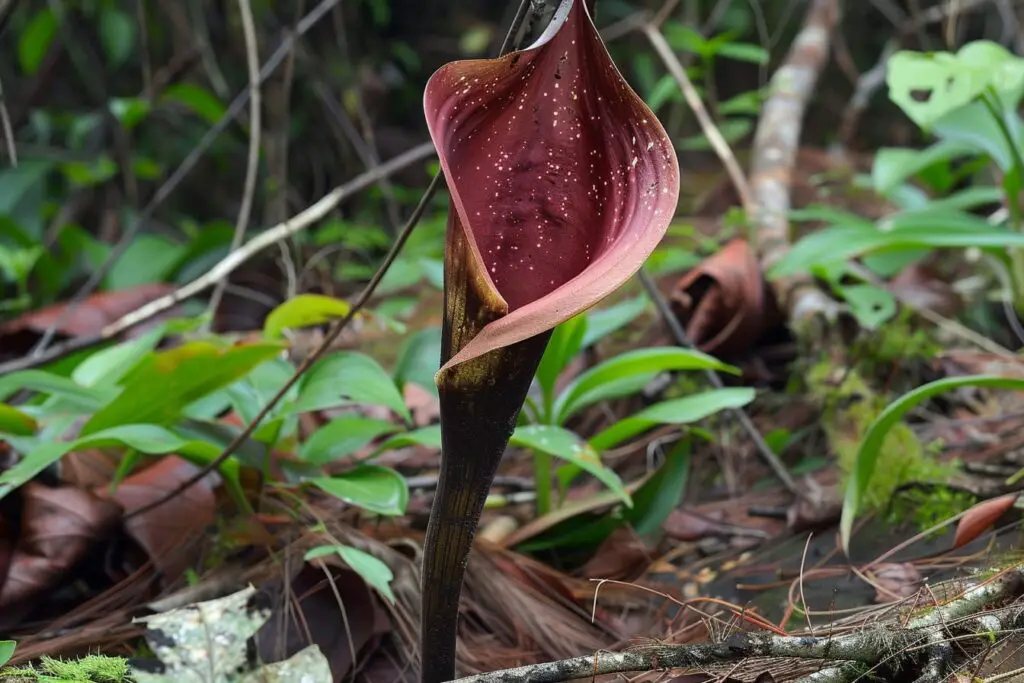
Native to the Mediterranean, the Dead Horse Arum produces maroon-colored flowers with a strong odor similar to that of a dead animal. The smell attracts carrion flies, which help pollinate the plant.
Yellow Lady Slippers (Cypripedium calceolus)
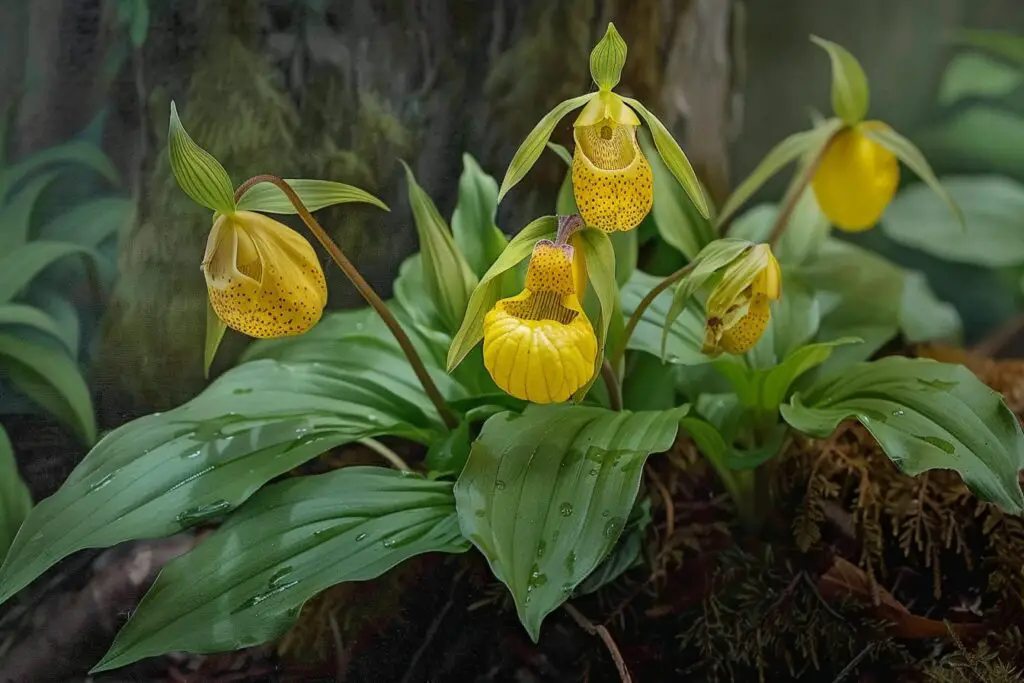
Yellow Lady Slippers are a rare orchid species native to Eurasia. These slipper-shaped flowers are a striking addition to any garden due to their vibrant combination of yellow and purple colors.
Silver Banksia (Banksia marginata)
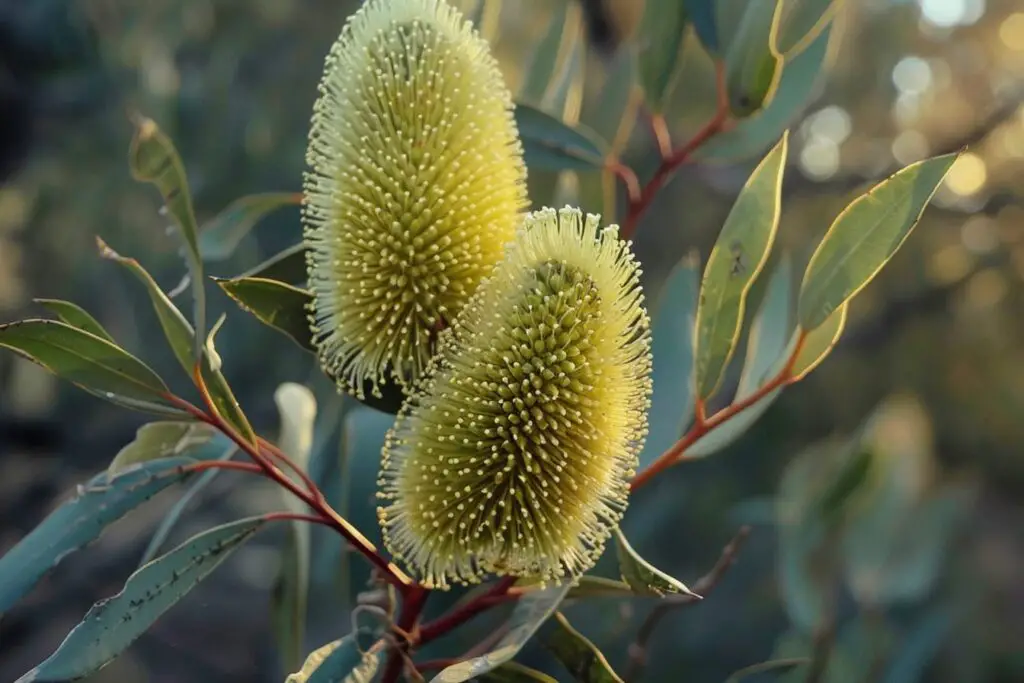
You have discovered the unique Silver Banksia, a native Australian plant that produces cylindrical, silver-gray flowers resembling bottlebrushes. This plant plays a vital role in its ecosystem as an important source of nectar for birds and insects.
Jade Vine (Strongylodon macrobotrys)
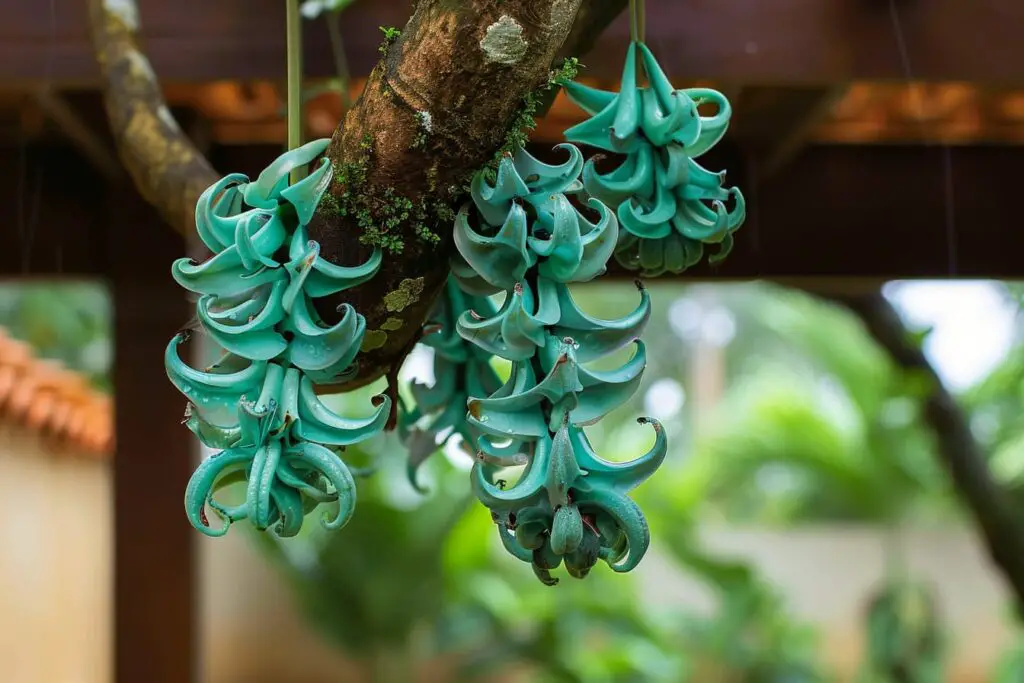
The Jade Vine is a stunning tropical vine that is native to the Philippines. Its long cascading clusters of claw-shaped flowers are a prized specimen among collectors. The flowers are iridescent and have a unique turquoise-green color. The plant requires direct sunlight and temperatures above 60 degrees Fahrenheit, and it is happiest in a clay pot that allows the roots to breathe. A peat-based potting mix that drains easily is recommended. Provide a sturdy trellis for the vine to climb or place your plant in a hanging basket.
Doll’s Eyes (Actaea pachypoda)
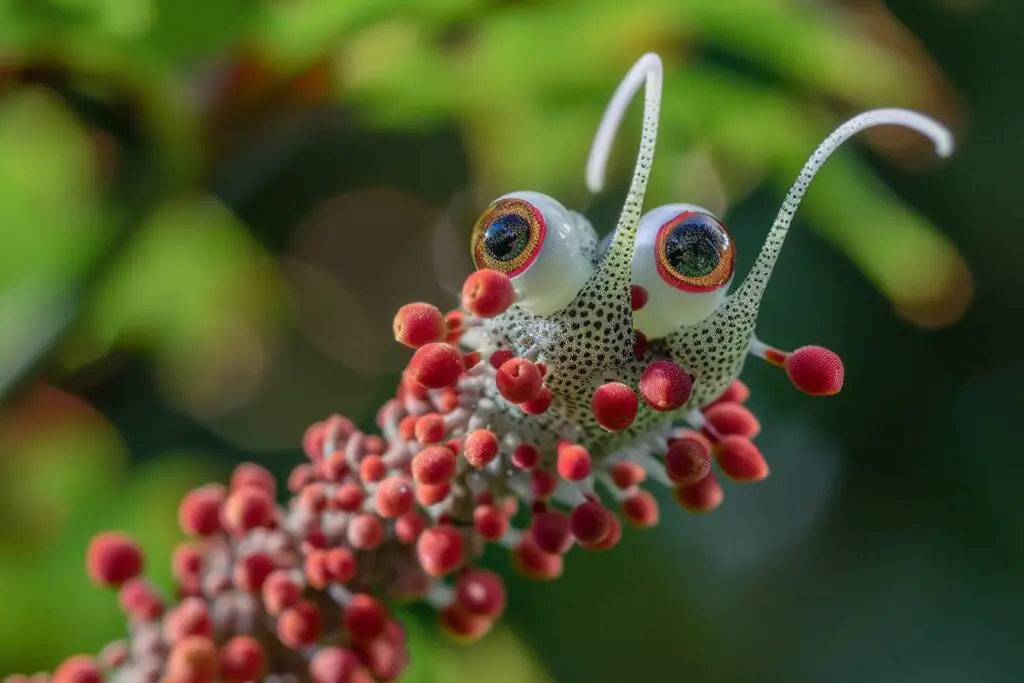
Actaea pachypoda, also known as Doll’s Eyes, is a woodland plant native to North America. This plant is known for its unique and striking white berries that resemble the eyes of a doll. However, it is important to note that the berries are highly toxic and should not be consumed under any circumstances. Ingesting the berries can cause severe gastrointestinal distress, cardiac arrest, and even death. It is best to admire the beauty of this plant from a safe distance and avoid touching or consuming any part of it.
Ice Cream Tulip (Tulipa ice cream)
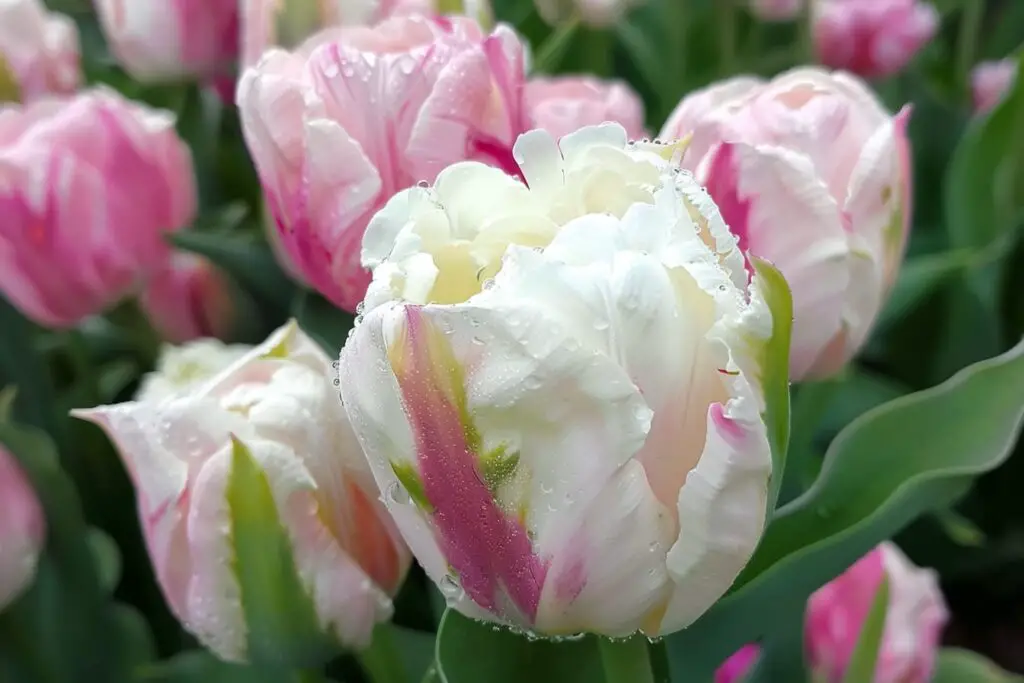
The Ice Cream Tulip is a unique tulip variety that has a whimsical appearance. It features a “scoop” of white petals surrounded by a “cone” of pink or purple petals, resembling an ice cream cone. This tulip is a popular choice for spring gardens and floral arrangements.
Baseball Plant (Euphorbia obesa)
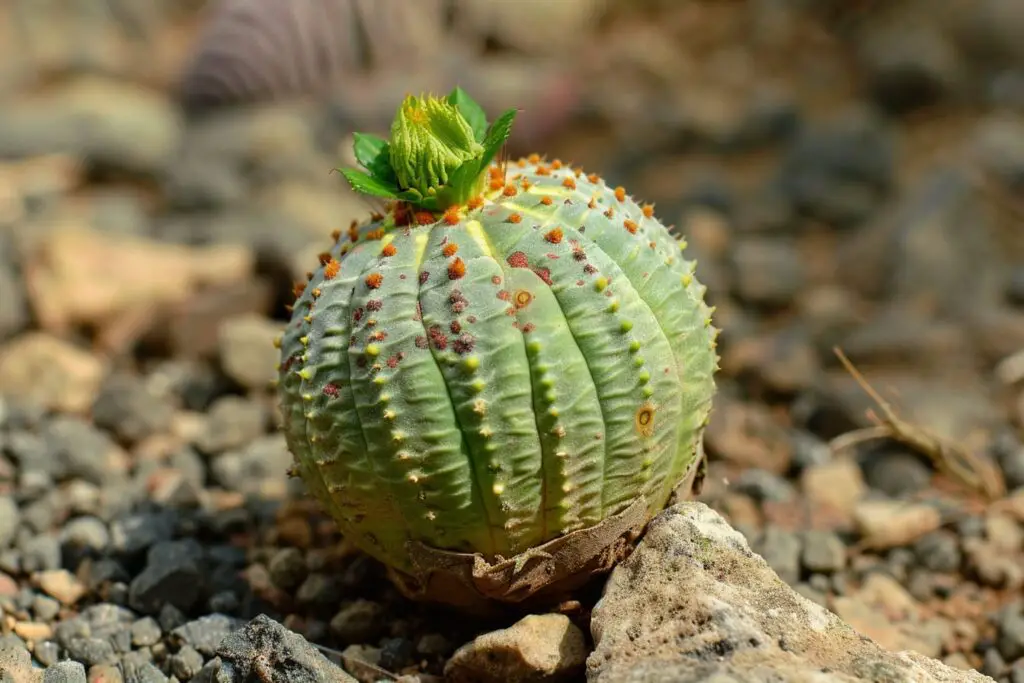
The Baseball Plant, also known as Euphorbia obesa, is a unique succulent that is native to South Africa. Its distinctive shape resembles that of a baseball, making it a popular choice for gardens and xeriscaping. This slow-growing, drought-tolerant plant is ideal for low-maintenance gardens.
Spiral Ginger (Costus barbatus)
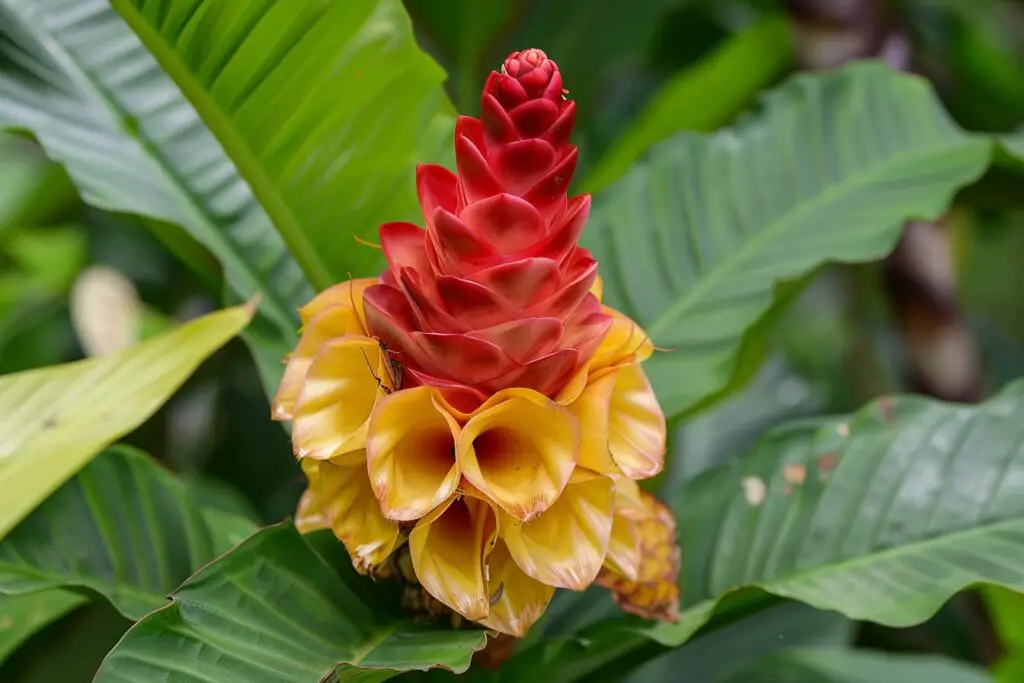
You can recognize the Spiral Ginger by its distinctive spiral-shaped cones of flowers. This tropical plant is native to Central and South America and adds a touch of exotic beauty to gardens and landscapes. The plant has a unique spiral arrangement of leaves along the stem and bears edible bright yellow tubular flowers. The plant flowers best in the temperatures between 75 F and 90 F (24-32 C) and appreciates high humidity. It grows up to a height of 7.9 feet (2.4 m) and has dark green and fuzzy ginger-like elliptic leaves that spiral up the slender cane-like stems.
Wolffia (Wolffia arrhiza)
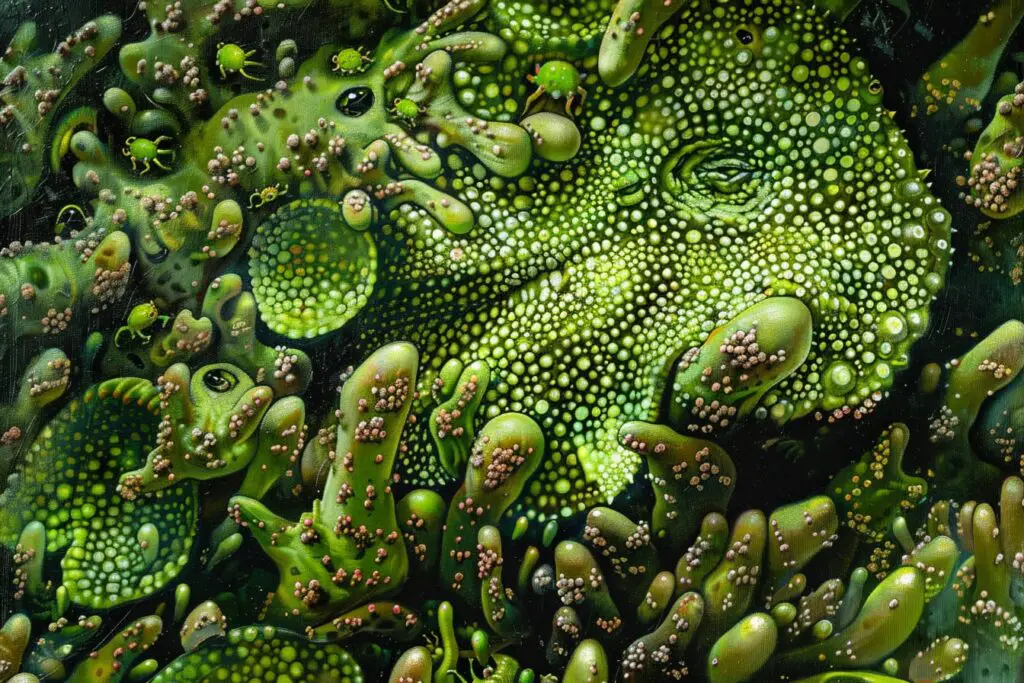
Wolffia, also known as watermeal, is the smallest flowering plant in the world. These tiny, free-floating plants can be found in calm bodies of water across the globe and resemble specks of green dust.
Globe Thistle (Echinops ritro)
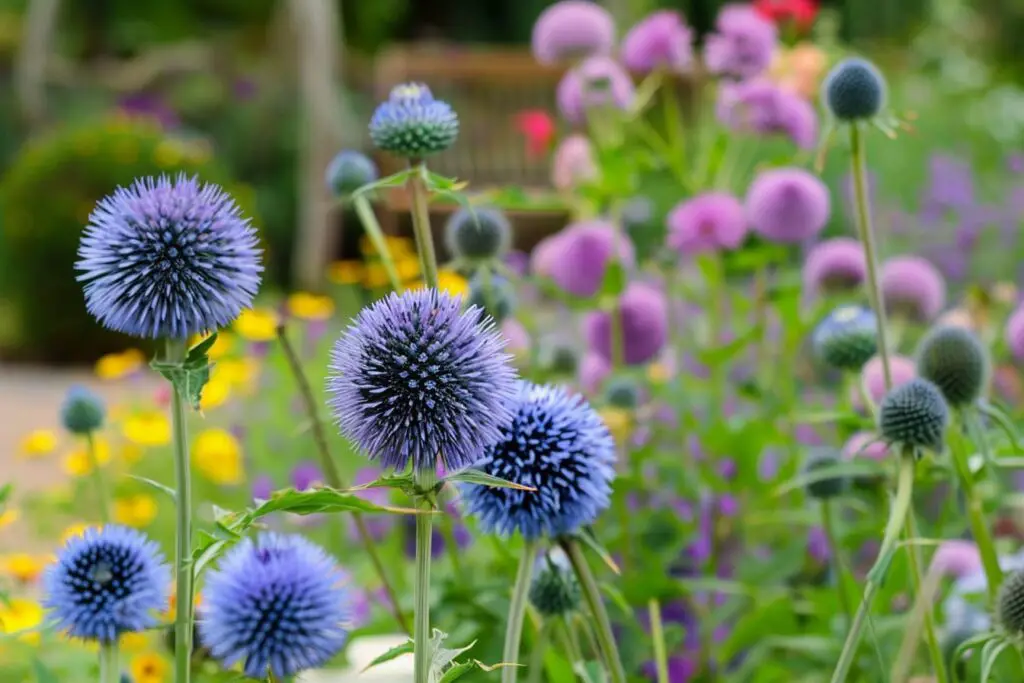
You can add a unique touch to your garden with the striking Globe Thistle. This perennial, native to Europe and Asia, features blue or violet globe-shaped flower heads atop spiny stems that can grow quite tall. It’s drought-tolerant and a good choice for xeriscaping and wildlife gardens.
Dutchman’s Pipe (Aristolochia littoralis)
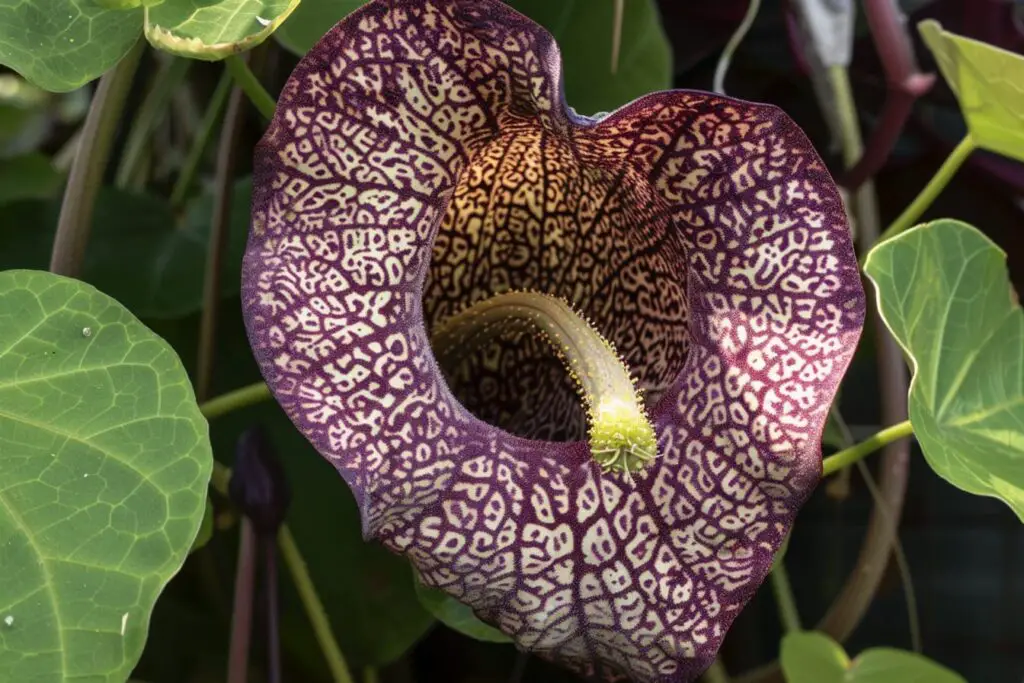
This South American vine produces large, pipe-shaped flowers with intricate, swirling patterns. The Dutchman’s Pipe is often cultivated for its unique appearance and its ability to attract pipevine swallowtail butterflies.
Red Hot Poker (Kniphofia uvaria)
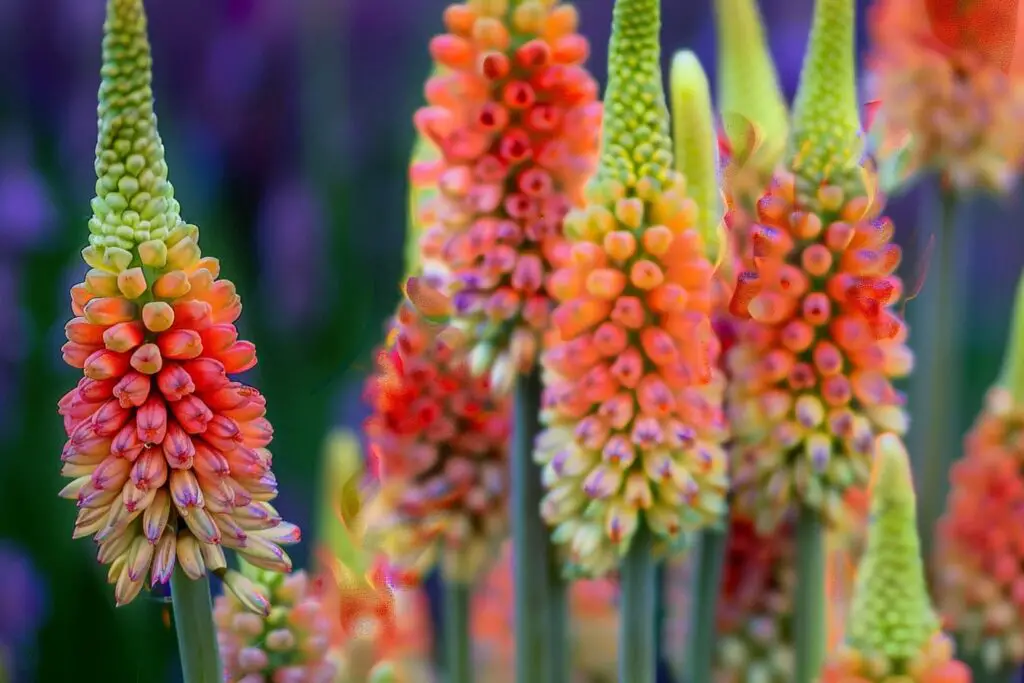
If you’re looking for a striking perennial to add a bold touch to your garden, the Red Hot Poker is an excellent choice. This herbaceous plant is native to South Africa and produces tall spikes of tubular, red or orange flowers that resemble a flaming torch. The vibrant blooms emerge from a base of grass-like foliage, creating a visually appealing contrast. This popular plant is sure to stand out in any landscape and attract pollinators with its bright colors.
Giant Water Lily (Victoria amazonica)
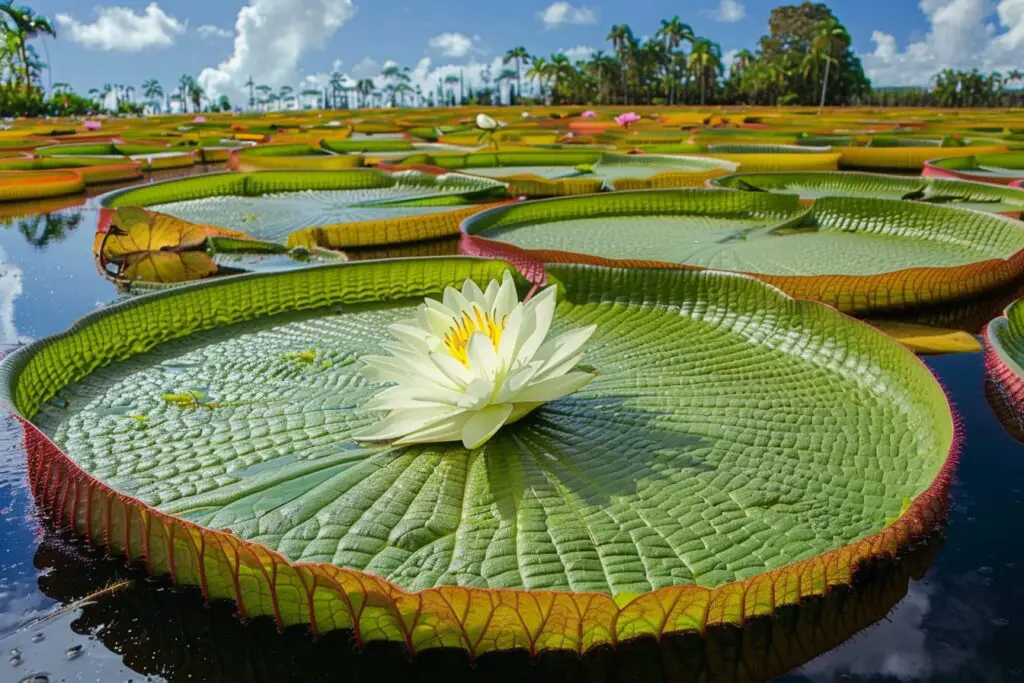
The Victoria amazonica is a giant water lily that grows in the Amazon River basin. It is known for its enormous, floating leaves that can reach up to 10 feet in diameter. The plant produces large, fragrant flowers that bloom at night and change color over the course of a few days.
Crested Euphorbia (Euphorbia lactea cristata)

This succulent is known for its unique, fan-shaped growth pattern and striking coral-like appearance. It is a popular choice for container gardens and indoor displays due to its low-maintenance requirements and exotic beauty. When stressed, the edges of the wavy branches can even develop a hue of pink. To care for your Crested Euphorbia, allow the soil to dry completely between waterings and water at least once a week during the summer. Drastically cut down on water during the winter.
Birds of Paradise
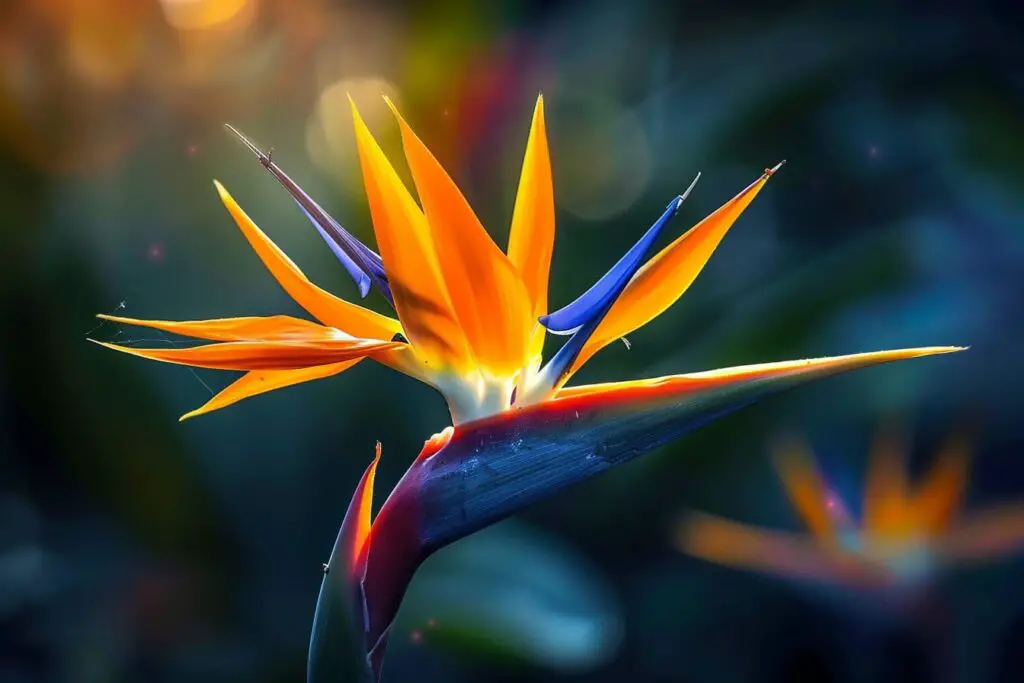
Birds of Paradise is a popular flower in gardens due to its unique shape resembling a bird in flight. It is a great addition to any garden looking for a touch of exoticism.
Snake Head Flower
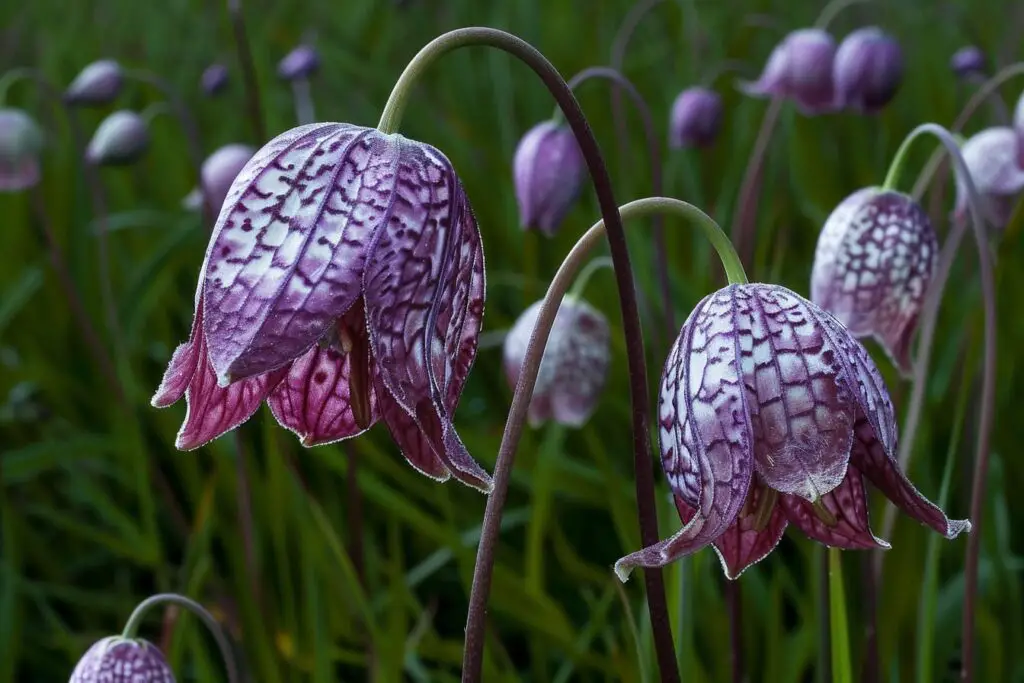
The Snake Head Flower, also known as turtlehead or white turtlehead, is a captivating perennial plant native to North America. Its hooded flowers closely resemble the shape of a snake’s or turtle’s head, creating a unique visual effect that intrigues both gardeners and passersby. This plant boasts white or pink blooms and thrives in wet environments like marshes and stream banks, adding a touch of natural charm and wonder to these habitats and gardens alike.
Snail Vine Flower (Vigna Caracalla)
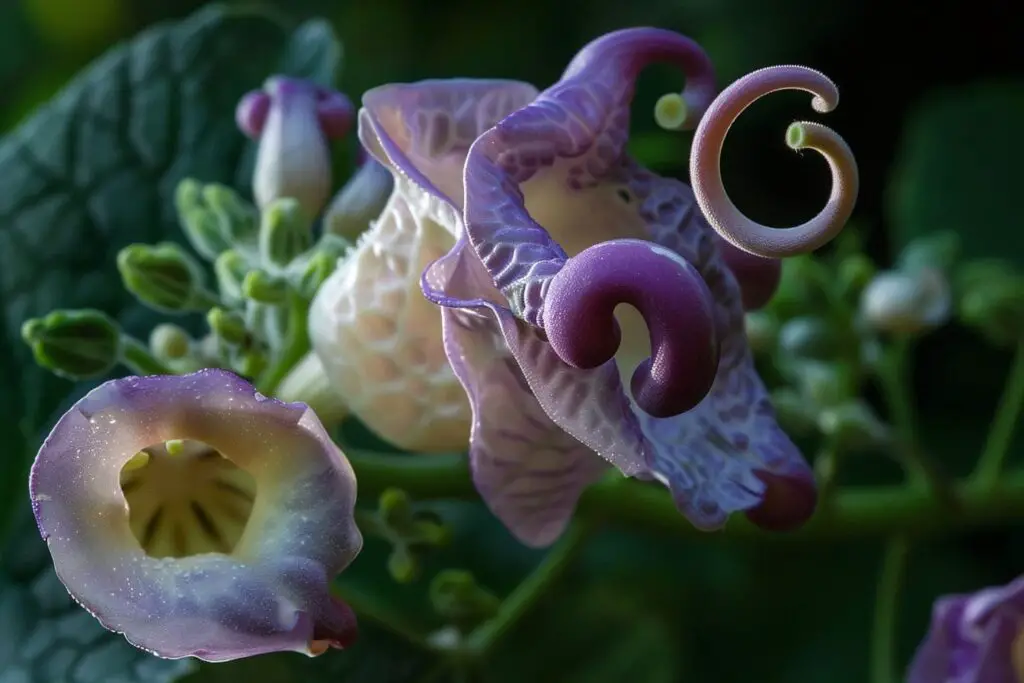
The Snail Vine Flower is a climbing vine that produces unique and captivating spiral-shaped flowers resembling snail shells. These blooms are delicate and feature a beautiful lavender hue and a pleasant fragrance that will add a touch of whimsy and charm to any garden, trellis, or arbor. This stunning plant is native to tropical South America and is an excellent addition to any landscape or plant collection. The Snail Vine Flower is a true testament to nature’s creativity and uniqueness.
Celosia Crest
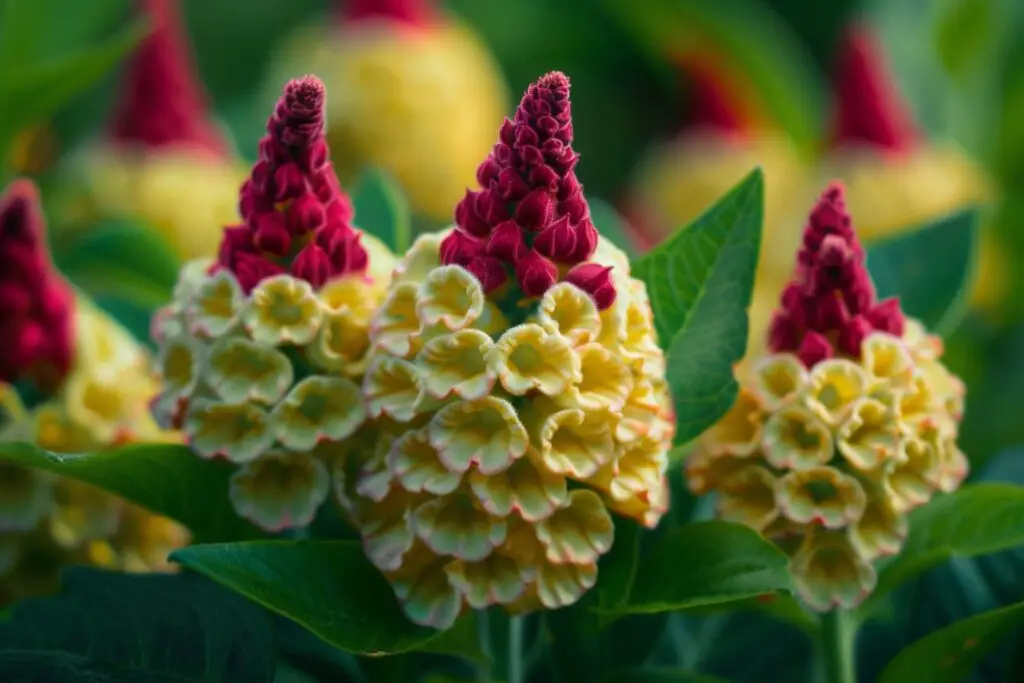
The Celosia Crest, also known as the Crested Celosia or Crested Cockscomb, is a fascinating plant with uniquely shaped, wrinkled flowers that resemble the crest of a rooster. This plant blooms in a range of colors, including red, yellow, and orange, making it an intriguing addition to any garden. Consider adding the Celosia Crest to your garden for a pop of color and a unique texture.
Shrimp Plant (Justicia brandegeeana)
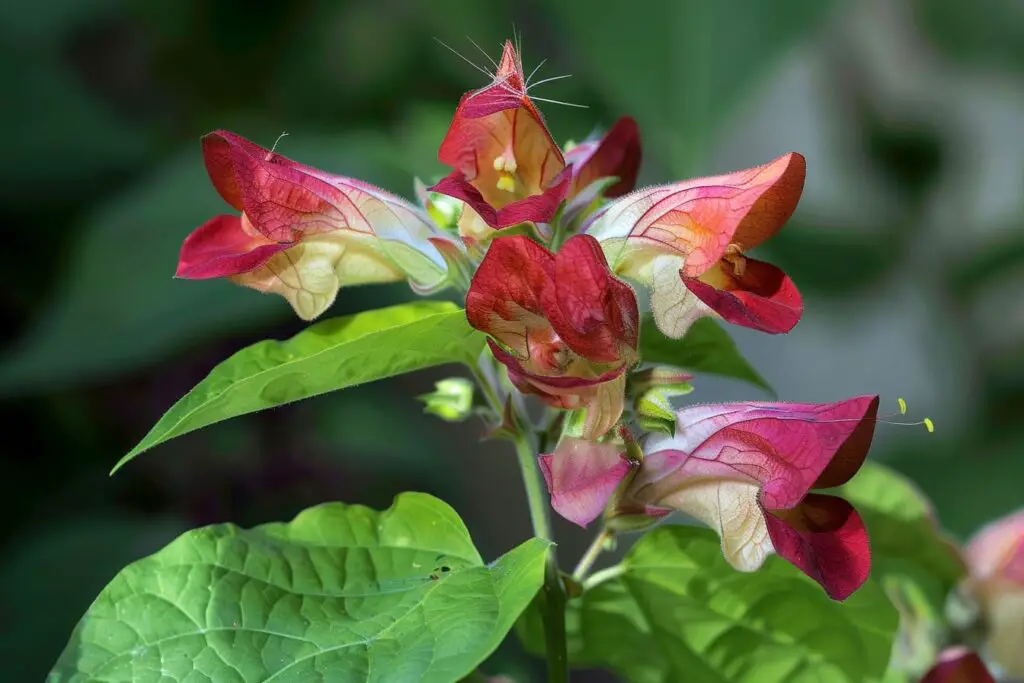
If you’re looking for an intriguing addition to your garden or container display, consider the Shrimp Plant (Justicia brandegeeana). This tropical shrub native to Mexico is known for its drooping clusters of bracts that resemble shrimp tails. The bracts come in a range of colors, from yellow to reddish-pink, and create a unique, shrimp-like appearance that captures the interest of plant enthusiasts and passersby alike.
Final Thoughts About Rare, Unusual & Weird Flowers
If you’re a nature lover, you’ll appreciate the beauty of rare, unusual, and weird flowers. Some of these flowers mimic other objects, such as the Bee Orchid, which looks like a bee. Others, like the Corpse Flower, have a putrid odor that attracts pollinators. It’s amazing how nature has created so many unique and fascinating flowers.
